Flower Calendar
- Spring(March~April~May)
- Summer(June~July~August)
- Autumn(September~October~November)
- Winter(December~January~February)
Spring(March~April~May)
Kanhizakura (Kanhizakura cherry tree), (Cerasus campanulata)
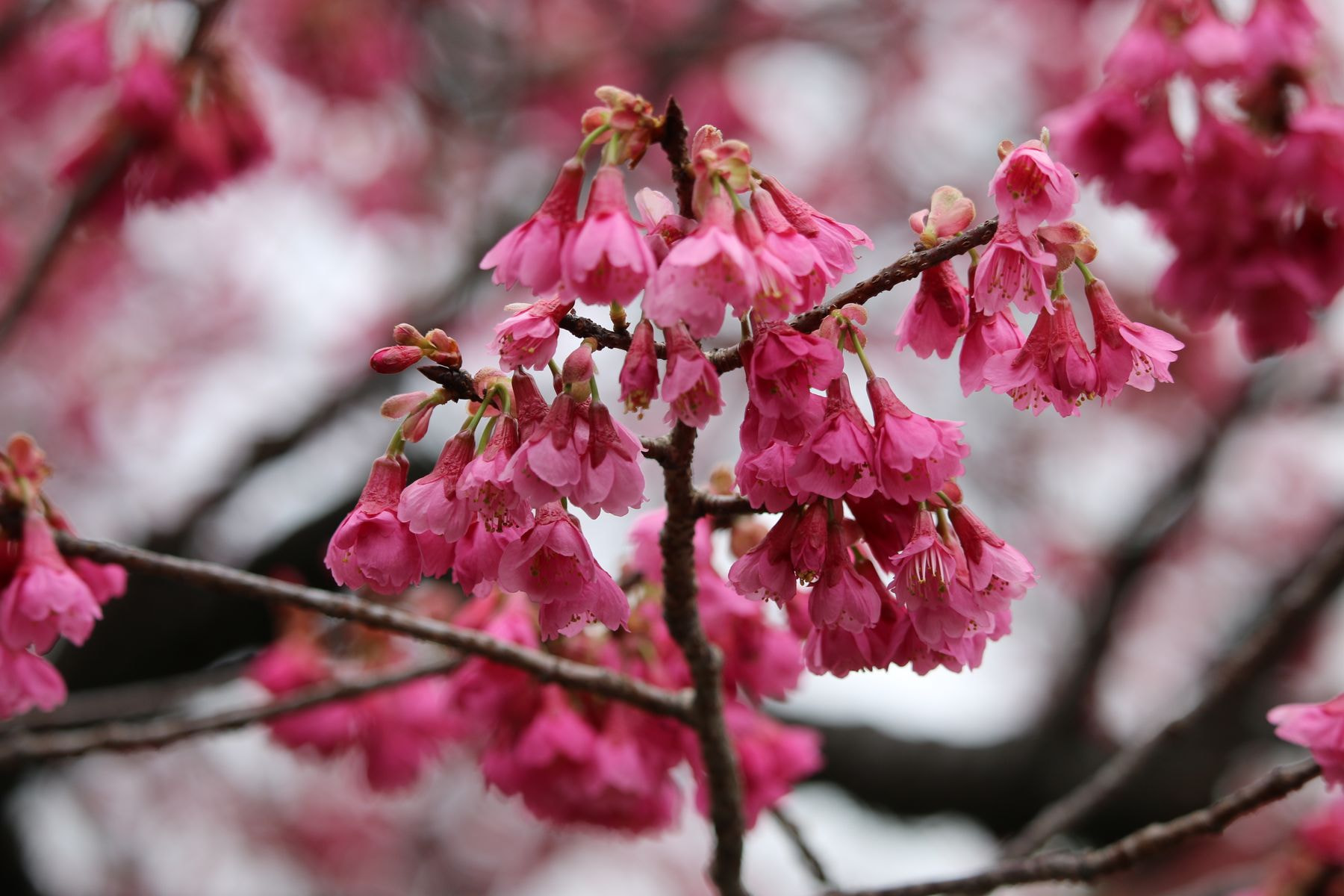
Place: Honmaru O-shibafu(Lawn)
It's alternatively called "Hikanzakura". It grows up to 5 to 7m. Its thick leaves are in the shape of long ellipse or egg.
Jan.
Feb.
Mar.
Apr.
May
Jun.
Jul.
Aug.
Sep.
Oct.
Nov.
Dec.
Kobushi (Kobushi magnolia), (Magnolia kobus)
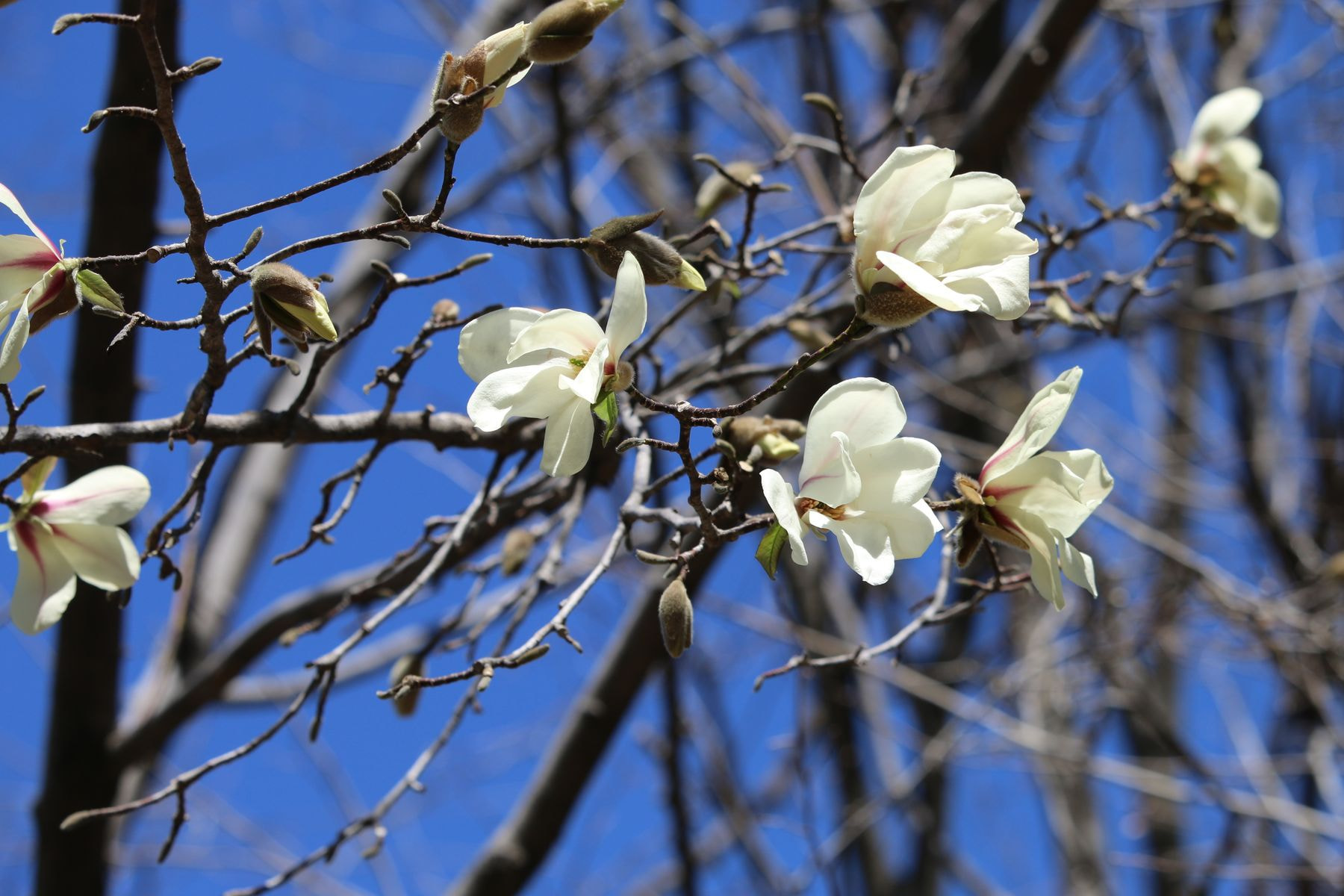
Place: Ninomaru Grove
It grows in mountains and grows up to 5 to 18m. It has white flowers with the diameter of 6 to 10cm that smell good.
Jan.
Feb.
Mar.
Apr.
May
Jun.
Jul.
Aug.
Sep.
Oct.
Nov.
Dec.
Shunran (Riverstream orchid), (Cymbidium goeringii)
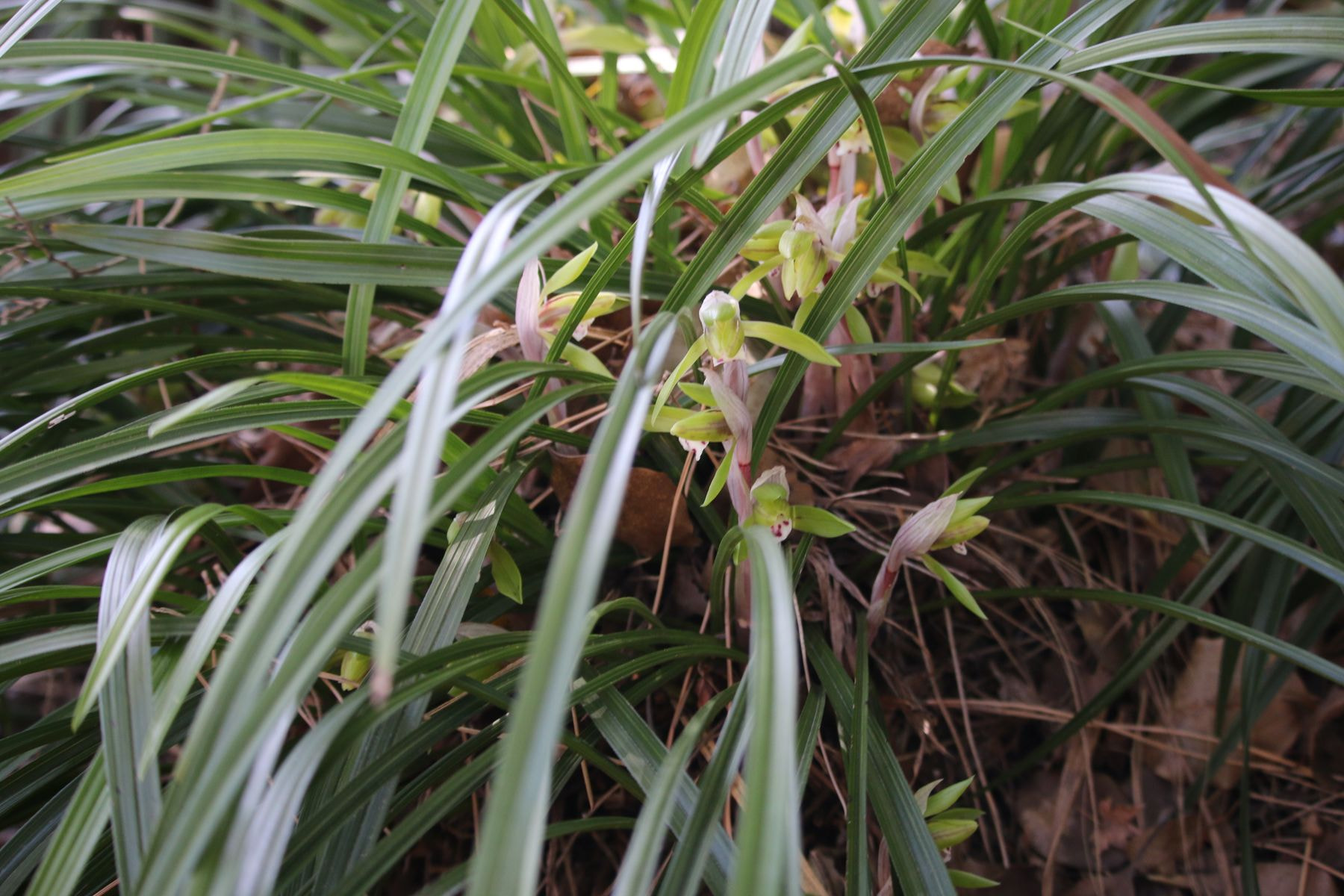
Place: Around Fujimi Tamon, Ninomaru Garden
This perennial usually grows in deciduous forests. Its line-shaped leaves have saw teeth at the edge, and feel gritty.
Jan.
Feb.
Mar.
Apr.
May
Jun.
Jul.
Aug.
Sep.
Oct.
Nov.
Dec.
Yamatsutsuji (Torch azalea), (Rhododendrom kaempferi var.kaempferi)
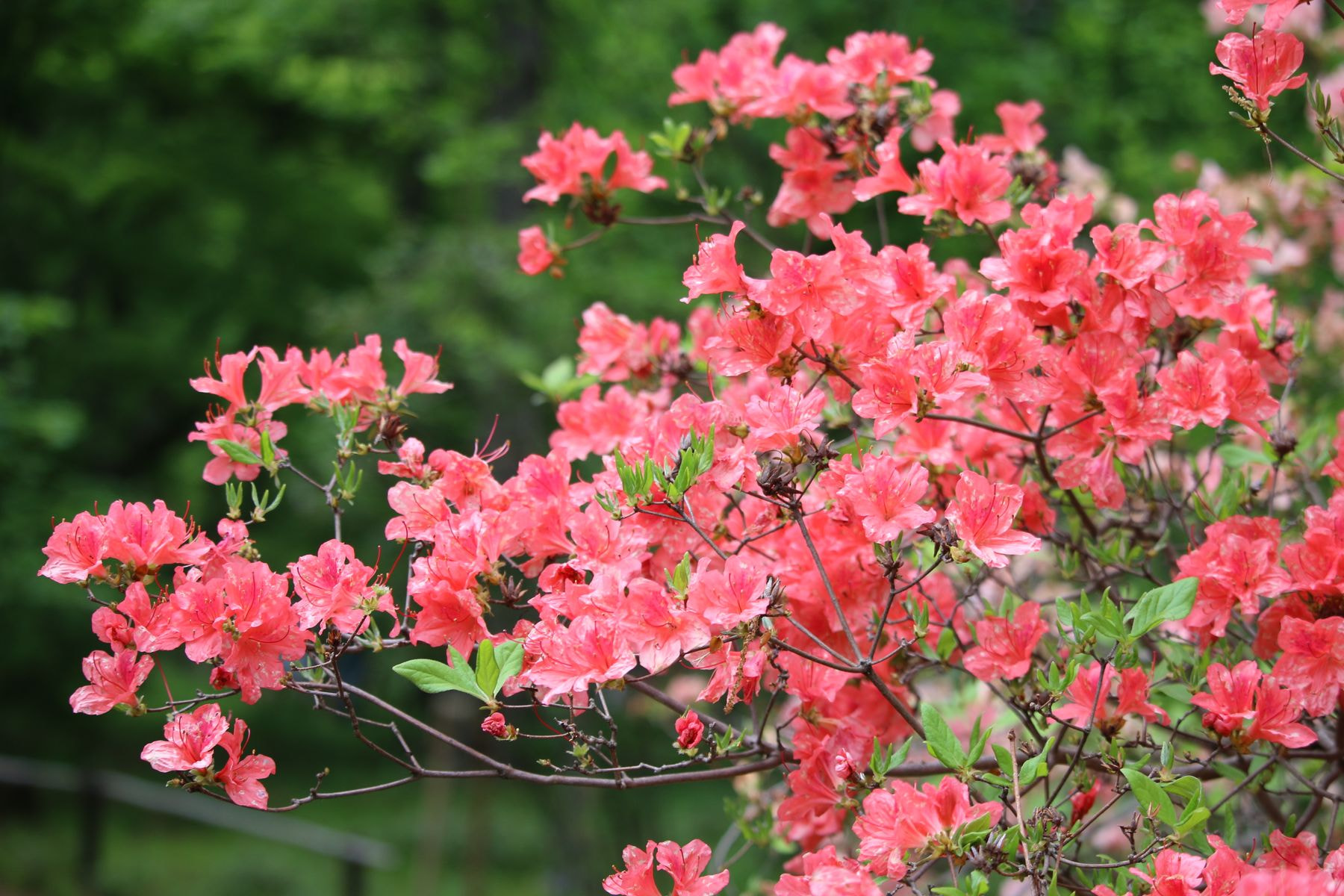
Place: Ninomaru Grove, Around Bamboo Garden
It grows mountains and hills, and grows up to 1 to 4m. It has 2 to 3 flowers at the tip of the branches around April to June. The flowers are in vermilion, red, or red-purple.
Jan.
Feb.
Mar.
Apr.
May
Jun.
Jul.
Aug.
Sep.
Oct.
Nov.
Dec.
Kurumetsutsuji (Kurume azalea), (Rhododendron Kurume Group)
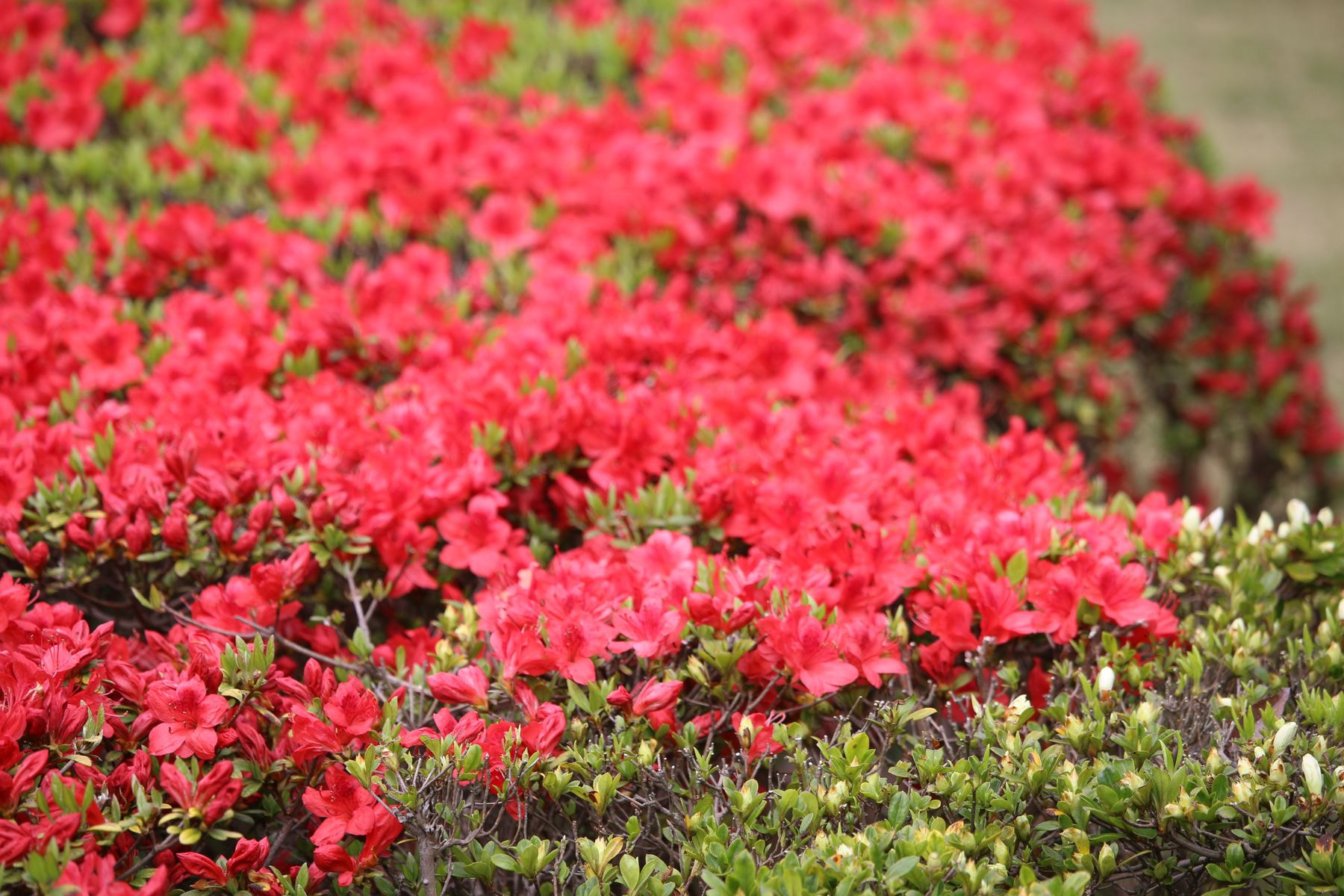
Place: Ninomaru Garden, Honmaru area
It's alternatively called "Kirishima". While it has been planted since ancient times, a species that is very close to Kurumetsutsuji grown naturally in Mt. Kirishima.
Jan.
Feb.
Mar.
Apr.
May
Jun.
Jul.
Aug.
Sep.
Oct.
Nov.
Dec.
Shiroyamabuki (Black jetbead), (Rhodotypos scandens)
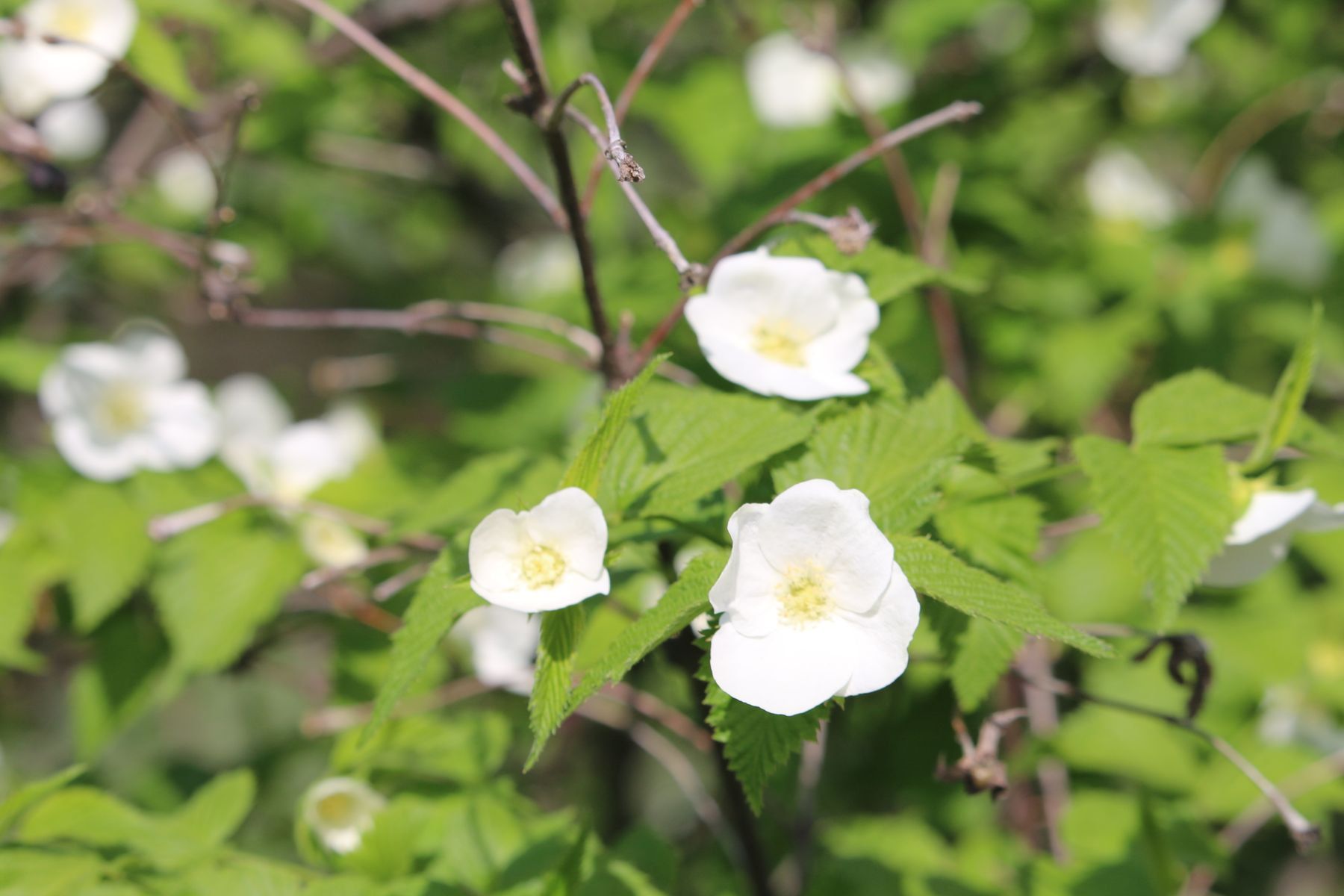
Place: East of Rose Garden, Ninomaru Garden
While it grows naturally in mountains occasionally, it often times is planted in gardens or parks.
Jan.
Feb.
Mar.
Apr.
May
Jun.
Jul.
Aug.
Sep.
Oct.
Nov.
Dec.
Kimokkoubara (Yellow banksia rose), (Rosa banksiae ʻluteaʼ)
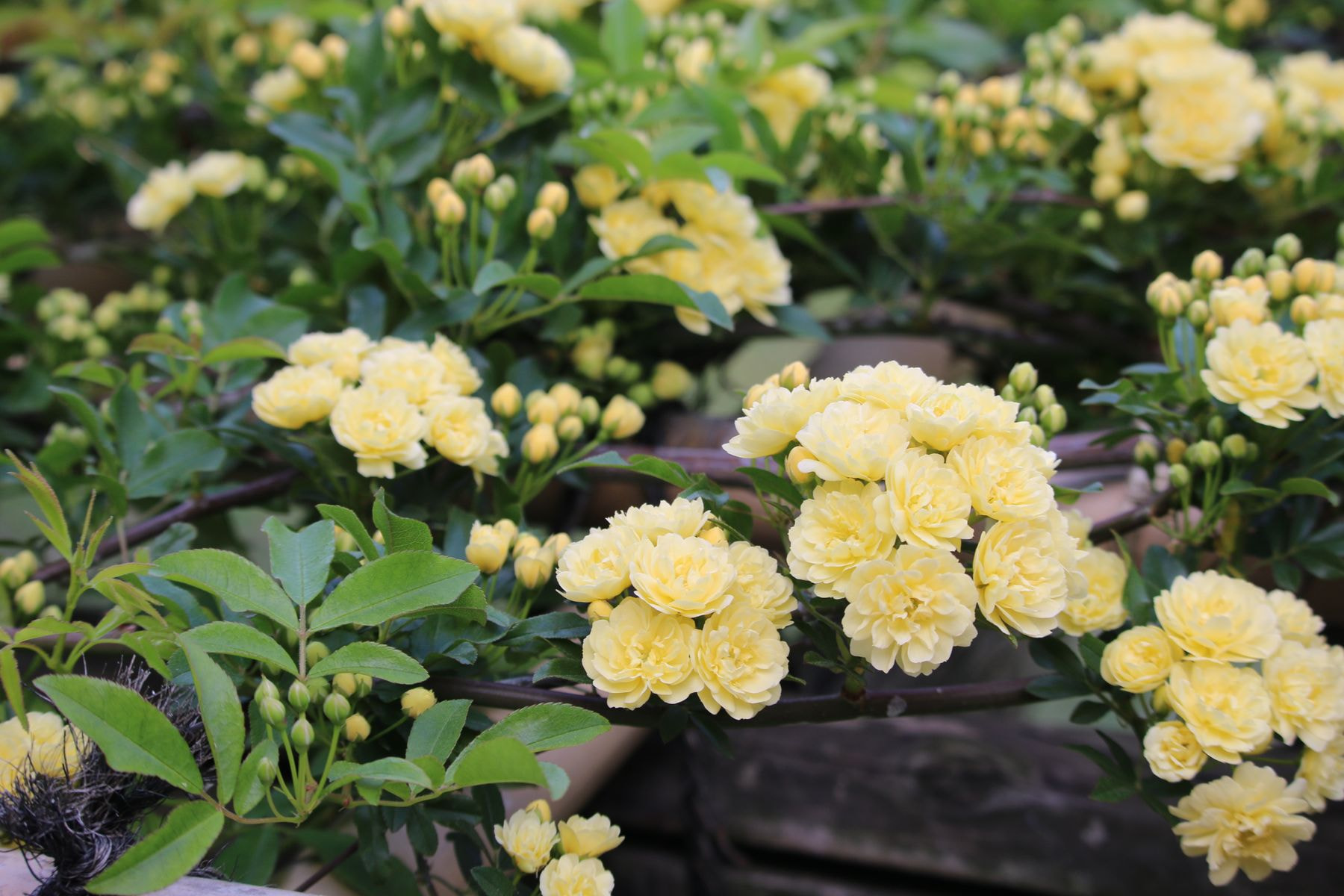
Place: Rose Garden
While it's native to China, it's often planted in gardens from Edo period.
Jan.
Feb.
Mar.
Apr.
May
Jun.
Jul.
Aug.
Sep.
Oct.
Nov.
Dec.
Kinran (Golden orchid), (Cephalanthera felcata)
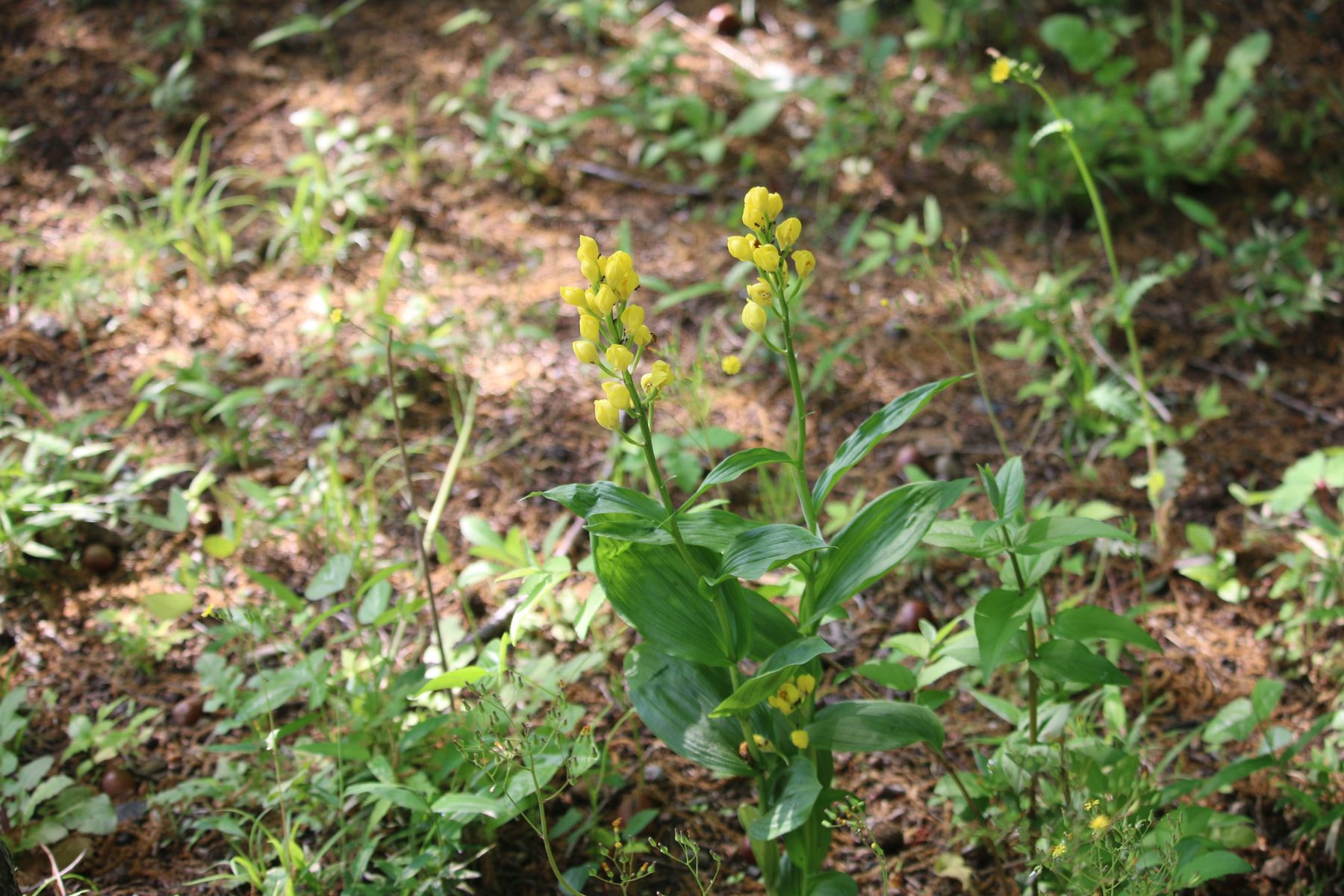
Place: Ninomaru Grove
This perennial grows in the groves in the hills or mountains. It has about 10 yellow flowers at the tip of the stem.
Jan.
Feb.
Mar.
Apr.
May
Jun.
Jul.
Aug.
Sep.
Oct.
Nov.
Dec.
Ginran (Silver orchid), (Cephalanthera erecta)
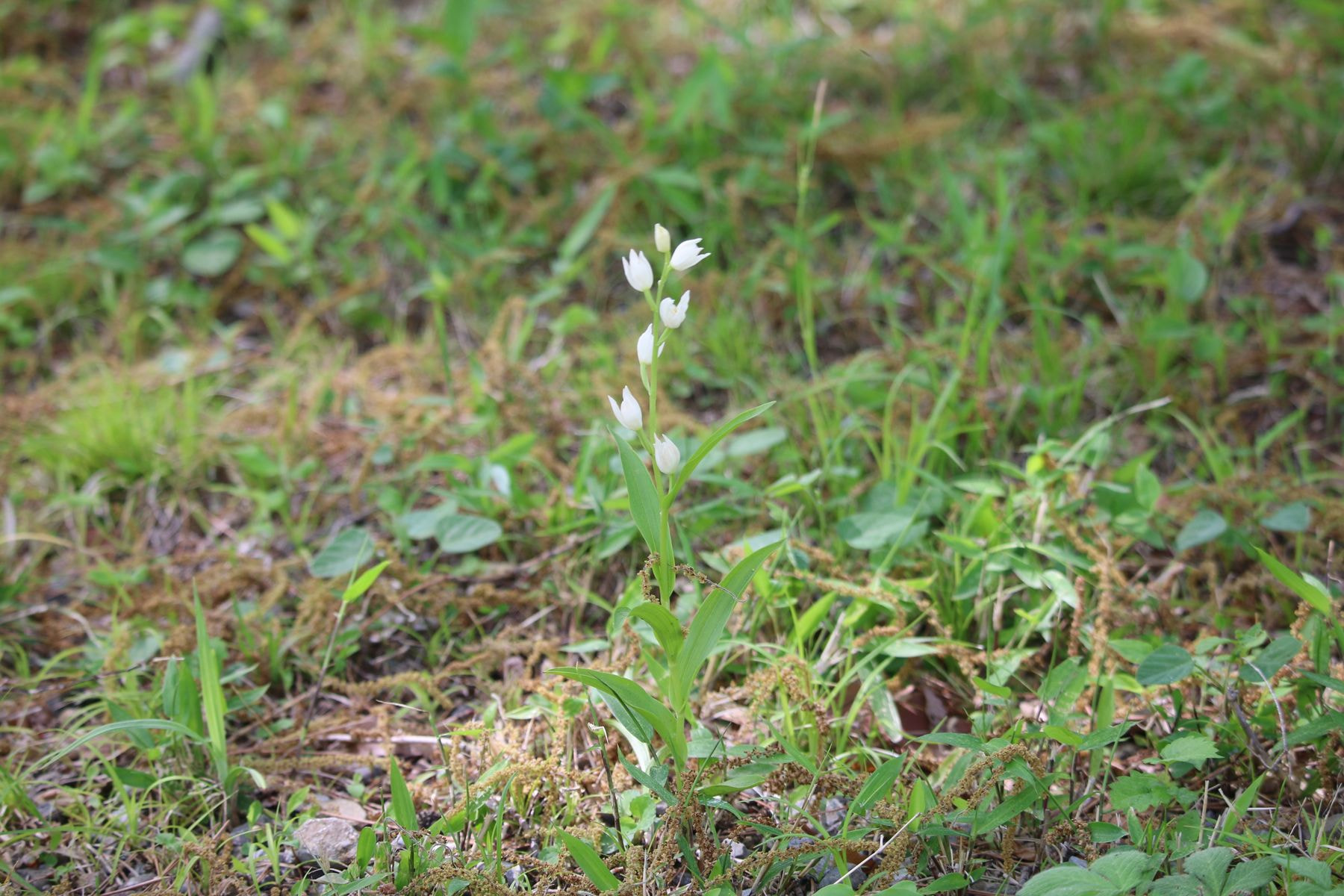
Place: Ninomaru Grove
This perennial grows under the leafy shade of trees in the hills or mountains. It grows up to 10 to 30cm.
Jan.
Feb.
Mar.
Apr.
May
Jun.
Jul.
Aug.
Sep.
Oct.
Nov.
Dec.
Hamanasu (Rugosa rose), (Rosa rugosa)
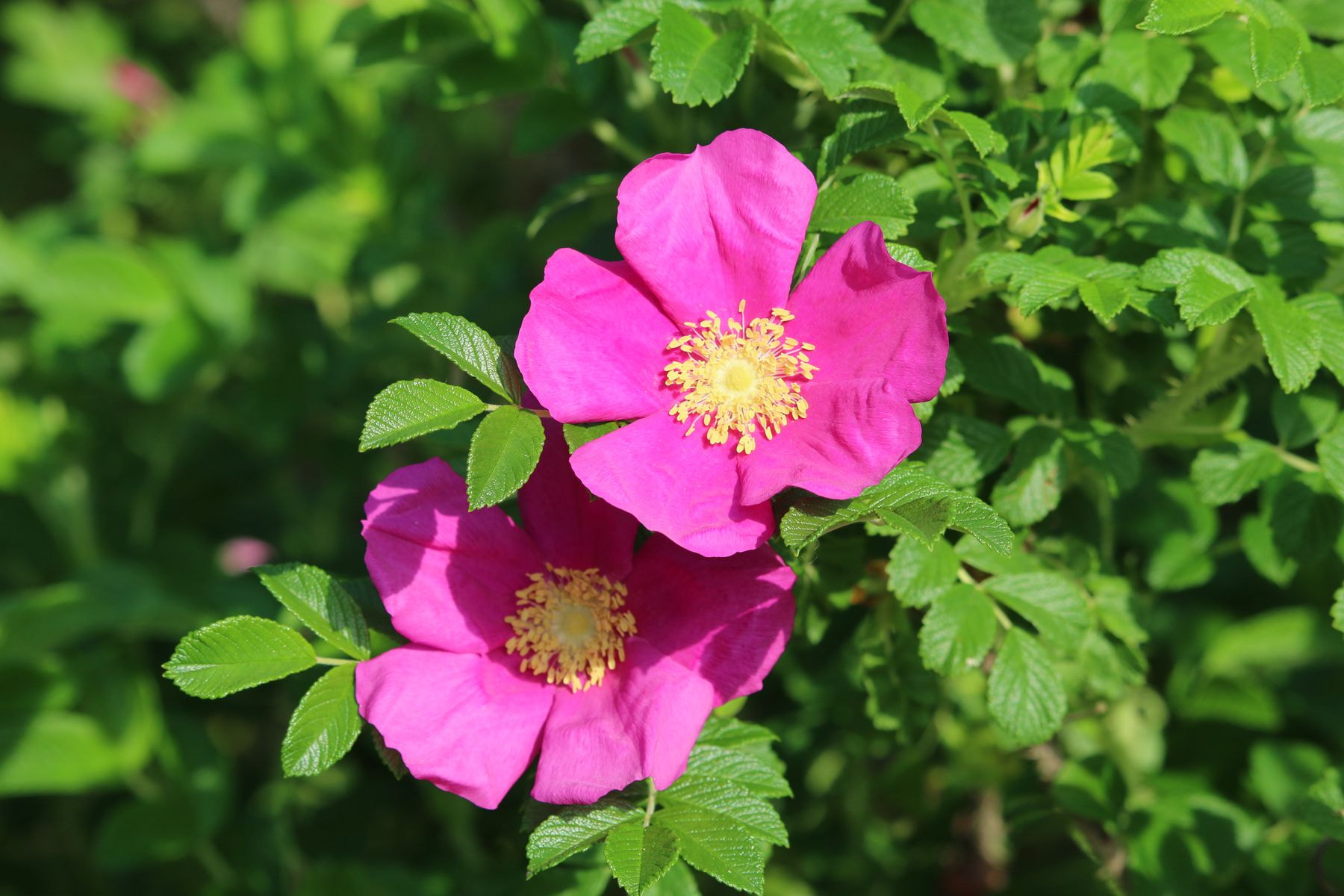
Place: Rose Garden
It often grows gregariously in sandy soil near the seashore. It's about 1 to 1.5m high, and its branches are covered by minute thorns.
Jan.
Feb.
Mar.
Apr.
May
Jun.
Jul.
Aug.
Sep.
Oct.
Nov.
Dec.
Ayame (Iris), (Iris sanguinea)
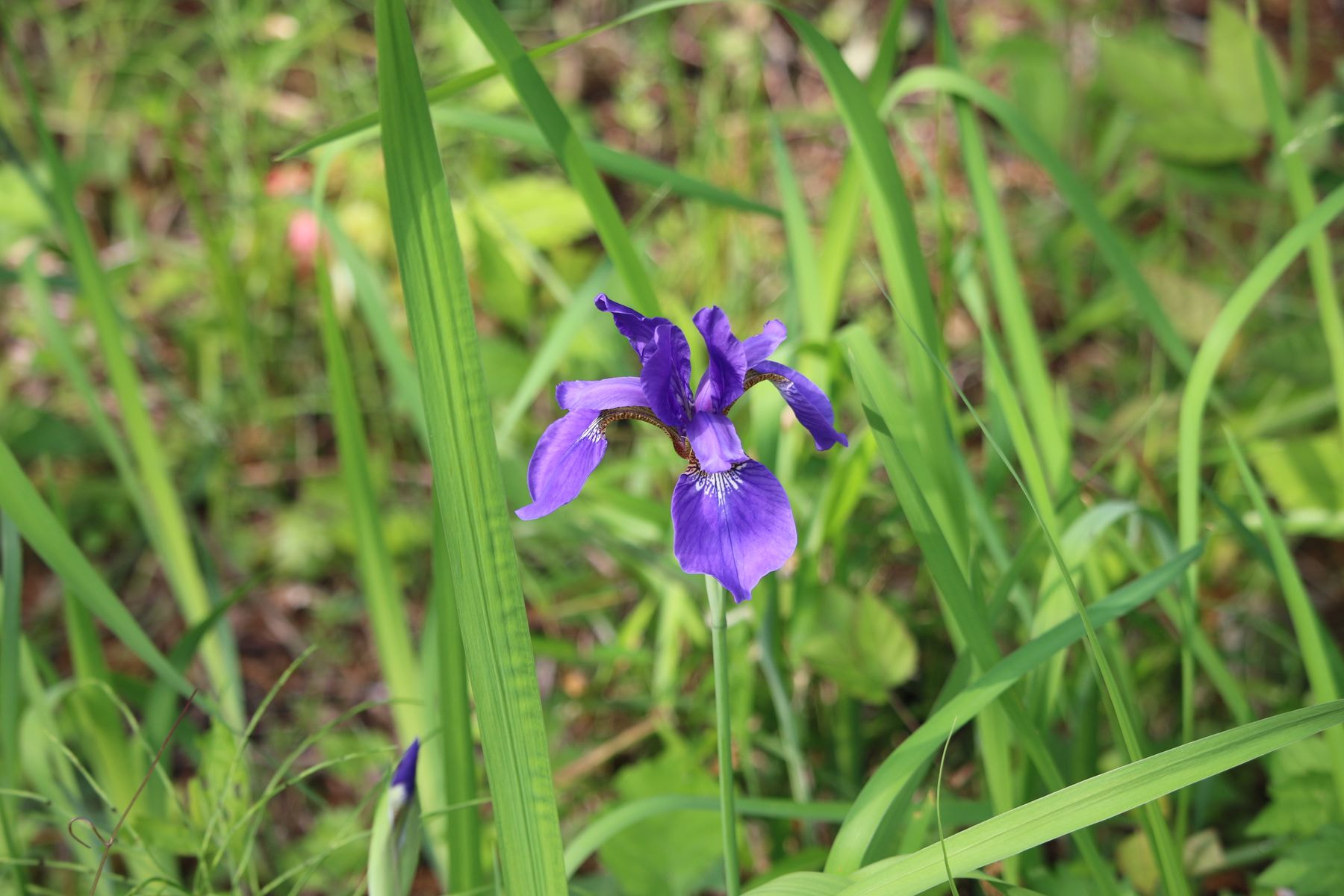
Place: Ninomaru Grove
This perennial grows in hills or mountains. While it has green scapes, the stem near the root is in reddish violet. It grows vertically up to 30 to 60cm.
Jan.
Feb.
Mar.
Apr.
May
Jun.
Jul.
Aug.
Sep.
Oct.
Nov.
Dec.
Nasuhiougiayame (Nasu arctic iris), (Iris setosa var.nasuensis)
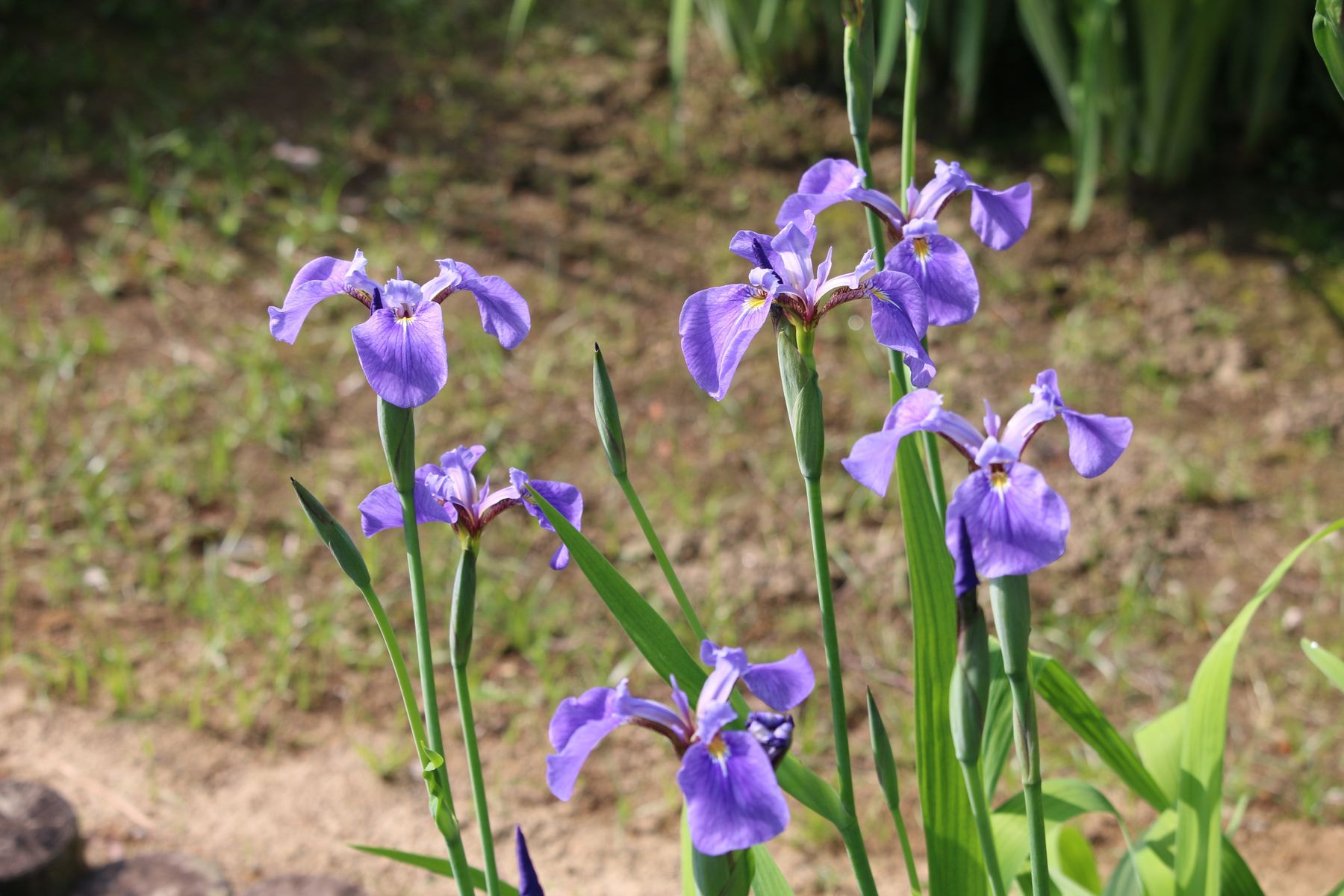
Place: Iris Garden
It’s a variant species of Hiougiayame (Iris setosa). It’s a perennial that grows in high moors or in wet grass fields. It has purple flowers.
Jan.
Feb.
Mar.
Apr.
May
Jun.
Jul.
Aug.
Sep.
Oct.
Nov.
Dec.
Koushinbara (China rose), (Rosa chinensis)
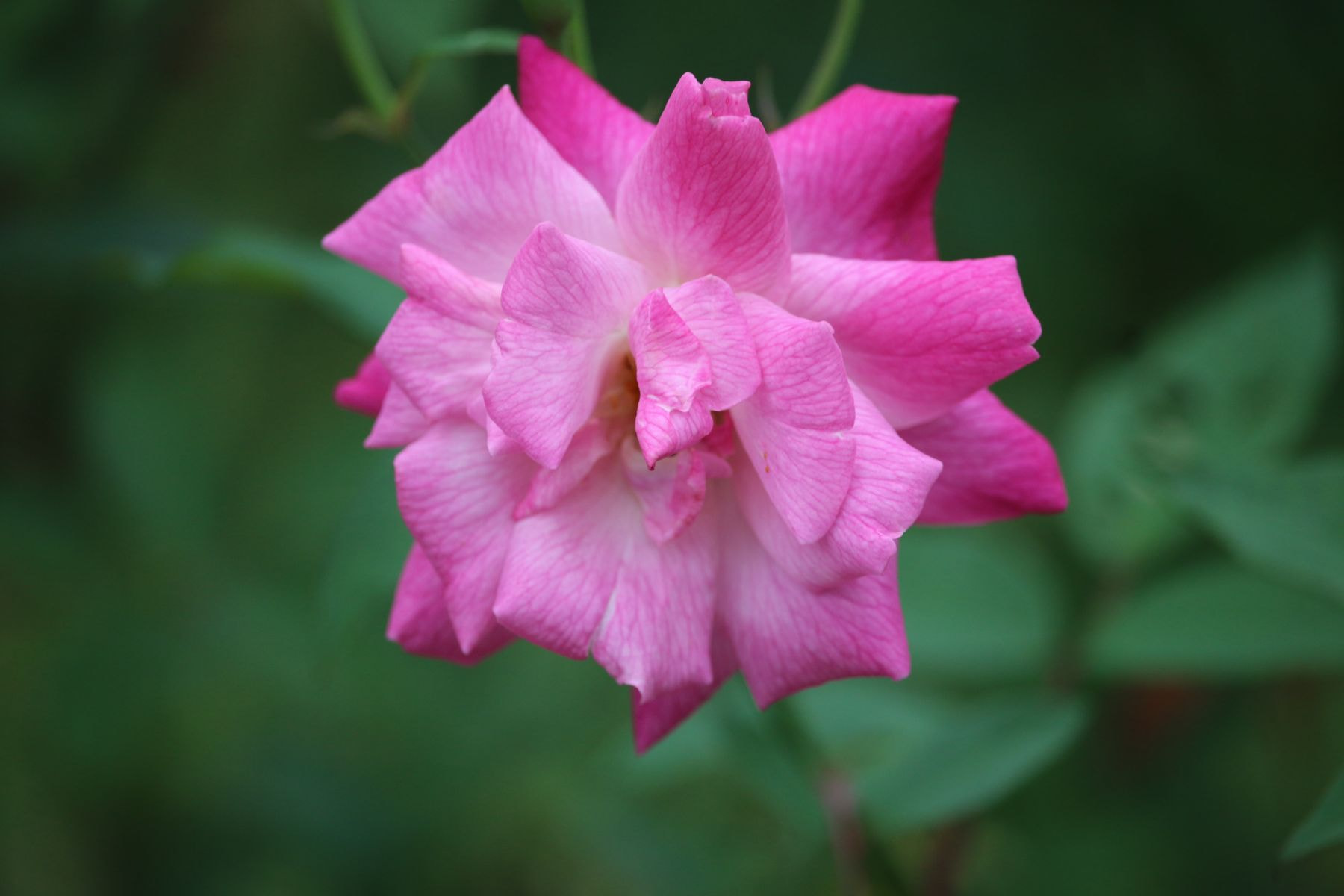
Place: Rose Garden
It's an original species of early modern roses and modern roses, and has been loved and planted in gardens since early days.
Jan.
Feb.
Mar.
Apr.
May
Jun.
Jul.
Aug.
Sep.
Oct.
Nov.
Dec.
Asaza (Fringed water-lily), (Nymphoides peltata)
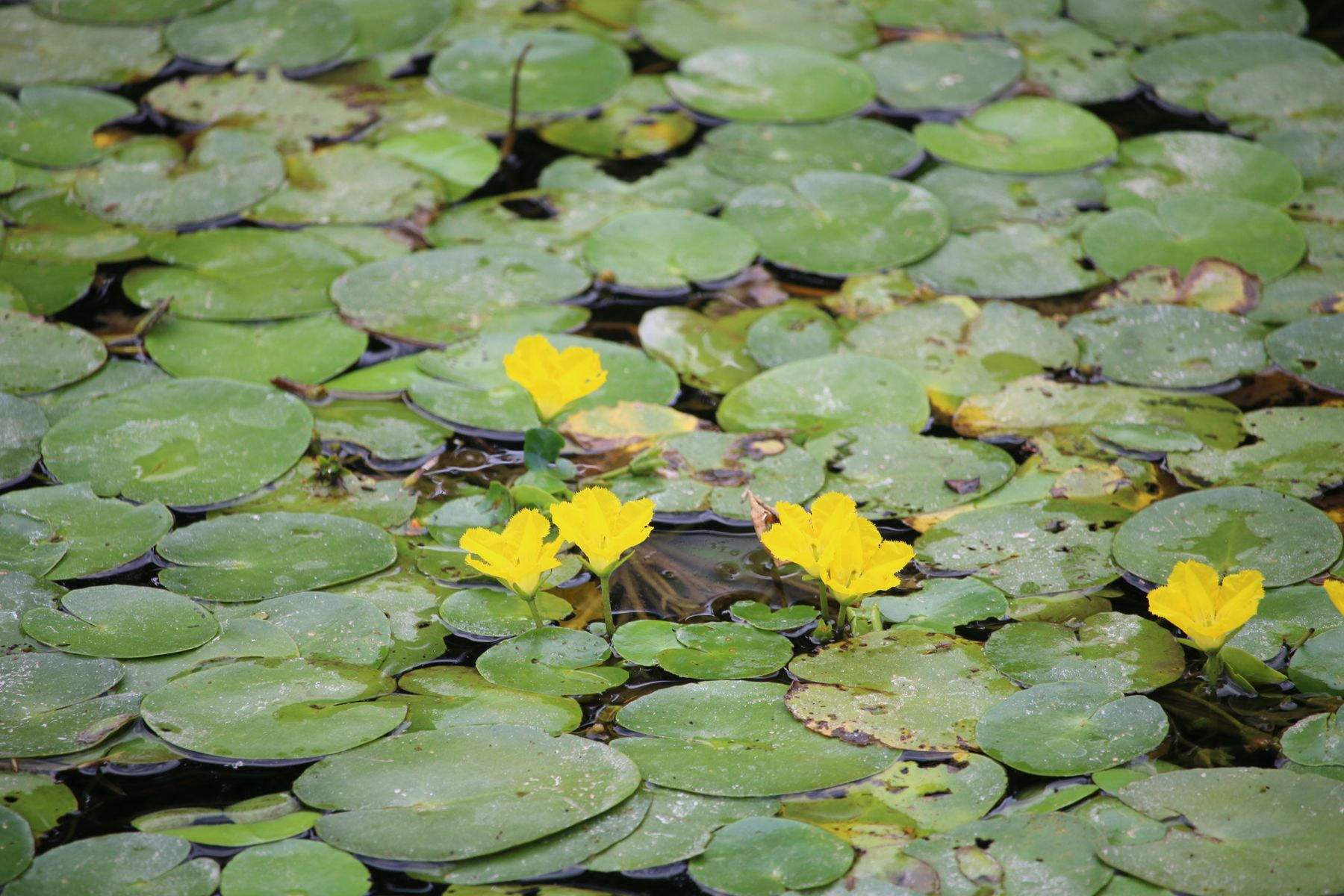
Place: Ninomaru Garden
This perennial is a waterweed that grows all over Japan except Hokkaido. Its rhizomes grow horizontally in the mud at the bottom of the water horizontally.
Jan.
Feb.
Mar.
Apr.
May
Jun.
Jul.
Aug.
Sep.
Oct.
Nov.
Dec.
Taisanboku (Southern Magnolia), (Magnolia grandiflora)
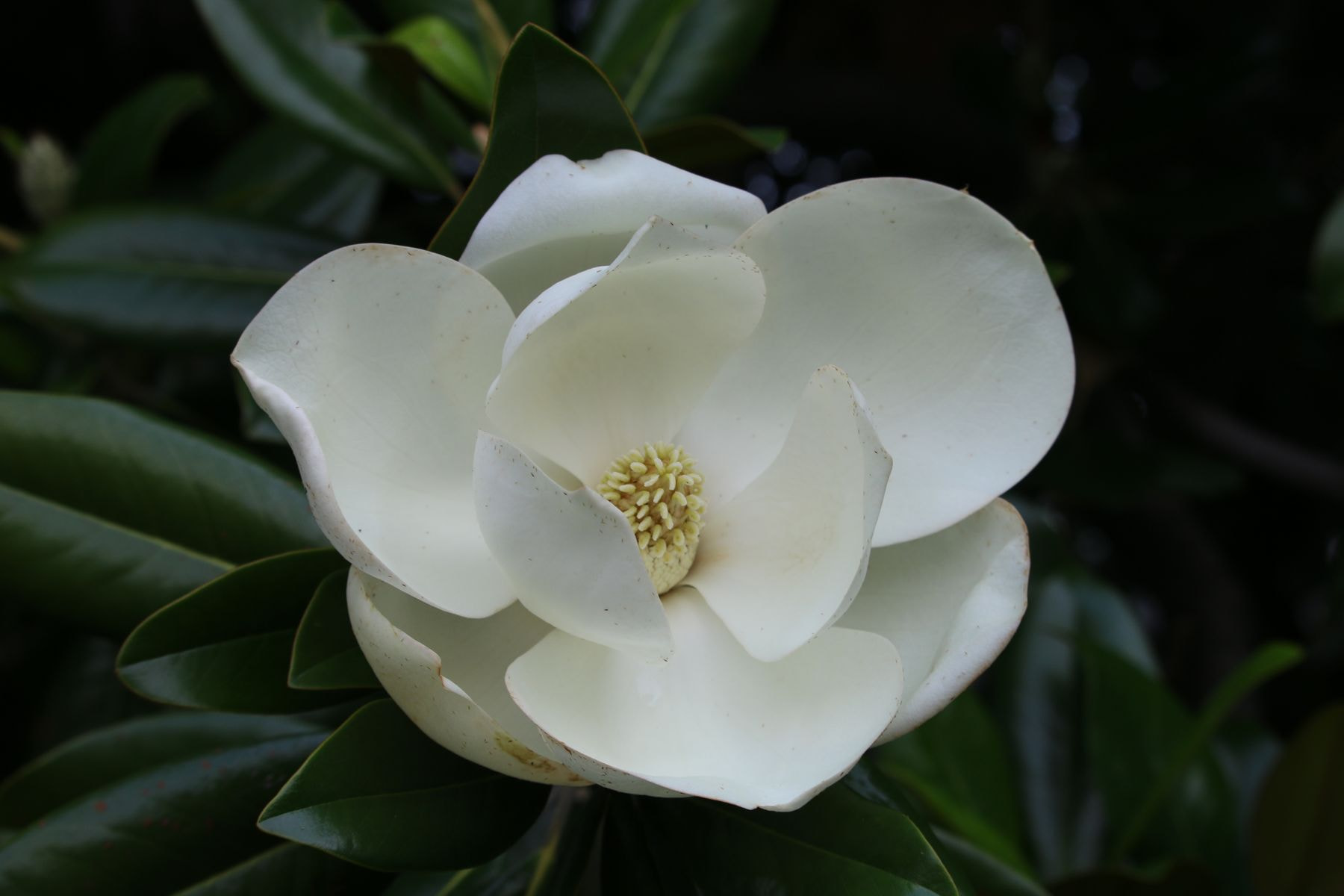
Place: Honmaru O-shibafu(Lawn), West of Shoryobu Chosha
It is native to South-Central area of North America, and was brought over to Japan in 1873. It's 10 to 20cm high. Its leaves are in the shape of long ellipse, and feel like leather.
Jan.
Feb.
Mar.
Apr.
May
Jun.
Jul.
Aug.
Sep.
Oct.
Nov.
Dec.
Summer(June~July~August)
Hanashoubu (Japanese water iris), (Iris ensata var.ensata)
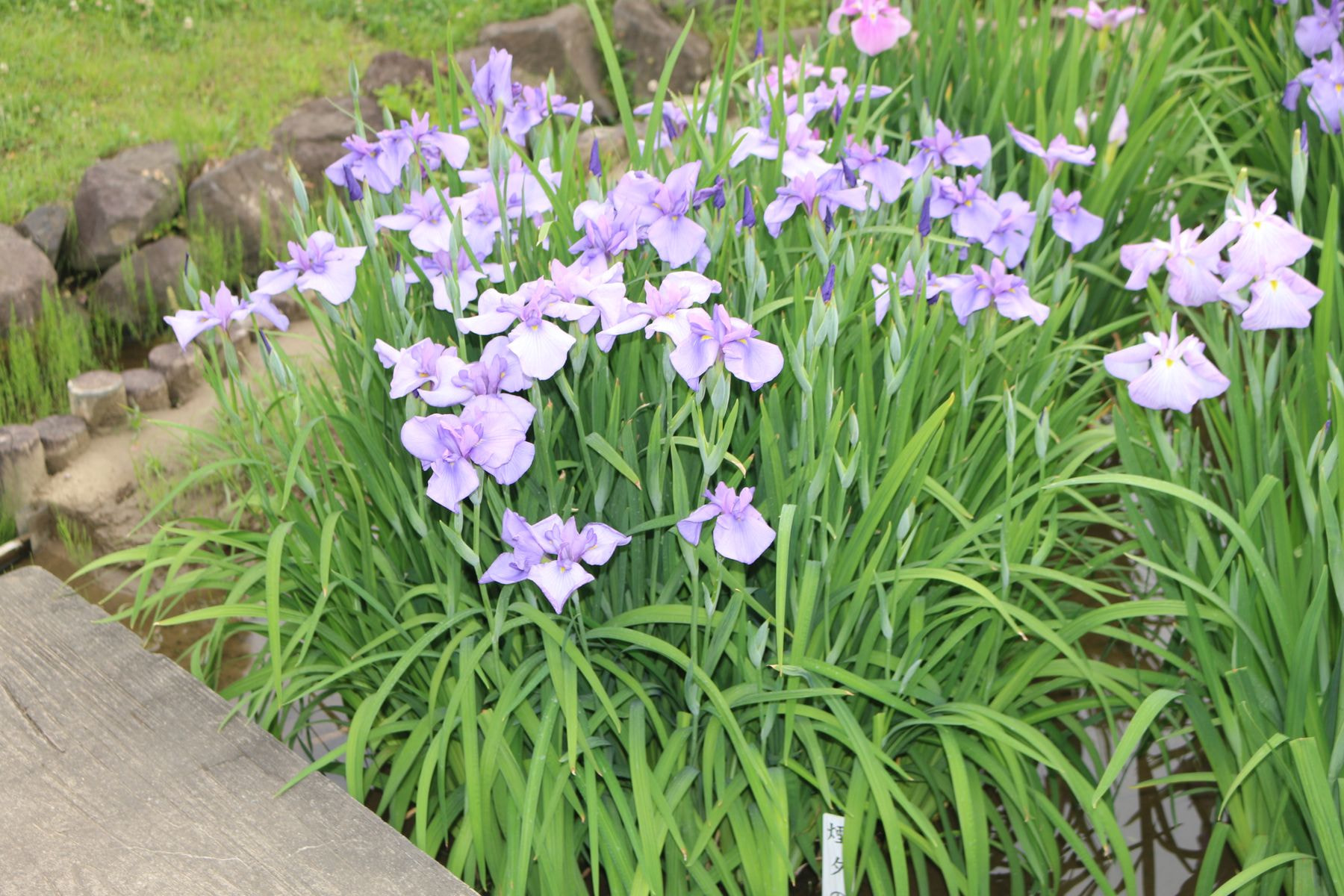
Place: Iris Garden
It's a garden species of Nohanashoubu (Iris ensata var. spontanea). The perennial grows gregariously in wet places near water, and grows up to 60 to 80cm.
Jan.
Feb.
Mar.
Apr.
May
Jun.
Jul.
Aug.
Sep.
Oct.
Nov.
Dec.
Ajisai (Hydrangea), (Hydrangea macrophylla)
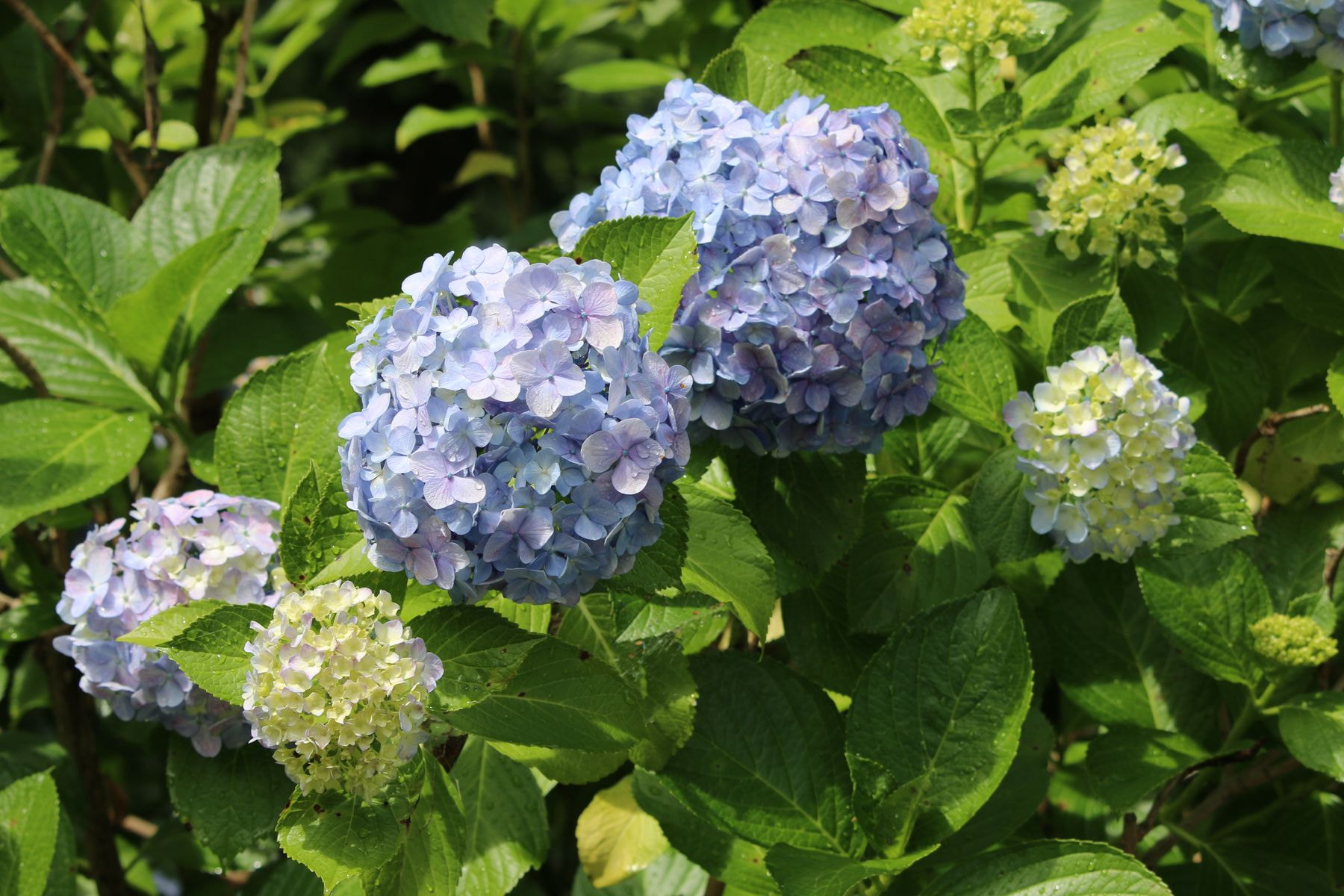
Place: North of Tenshudai, Around Fujimi Tamon
The hermaphrodite flowers of Gakuajisai (Lacecap hydrangea) have changed into decorative flowers. It's been loved and planted since early days.
Jan.
Feb.
Mar.
Apr.
May
Jun.
Jul.
Aug.
Sep.
Oct.
Nov.
Dec.
Hotarubukuro (Spotted bellflower), (Campanula punctata)
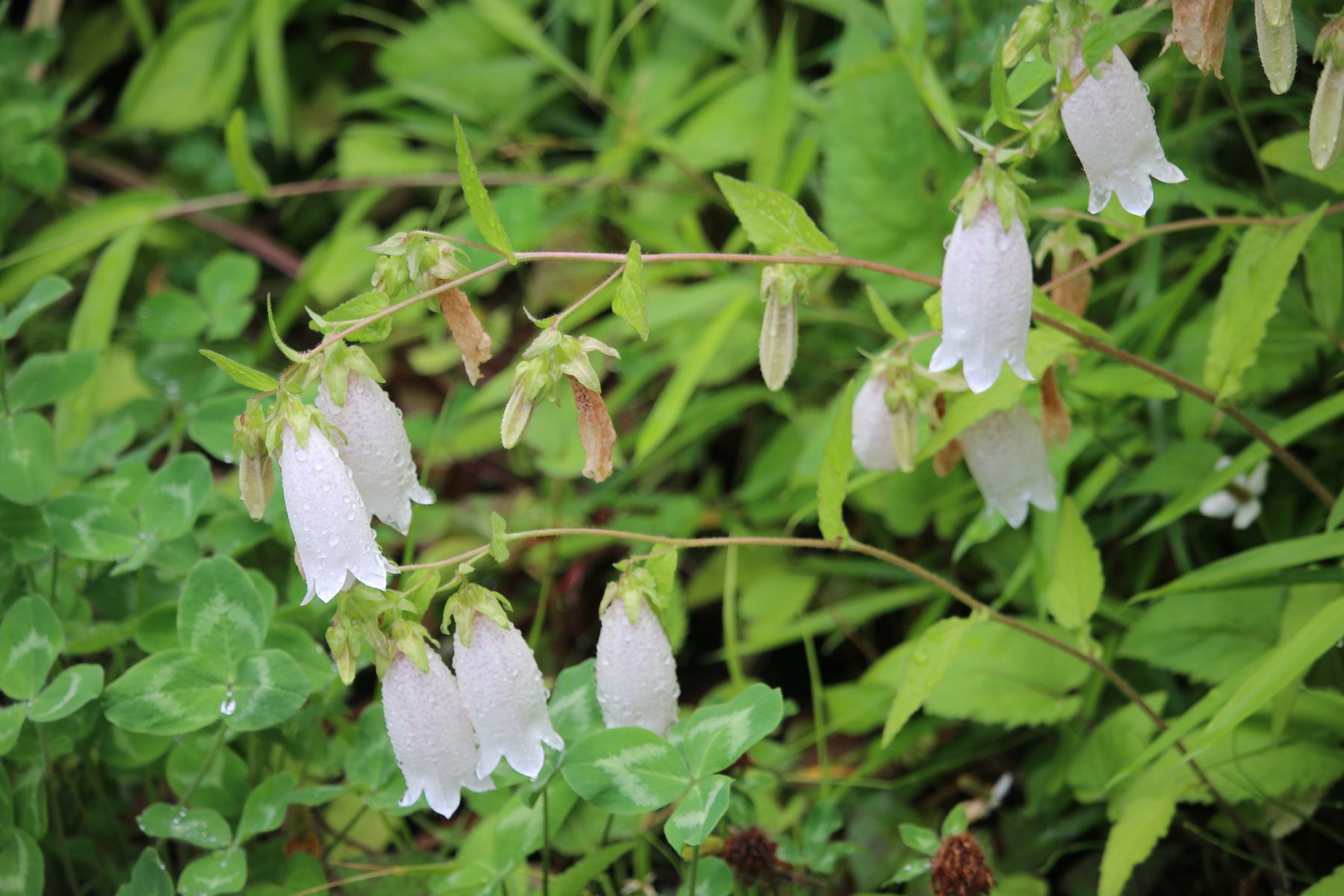
Place: South of Orchard, Ninomaru Grove
This perennial can usually be seen in hills and mountains here and there. It has pink or white flowers.
Jan.
Feb.
Mar.
Apr.
May
Jun.
Jul.
Aug.
Sep.
Oct.
Nov.
Dec.
Hamanasu fruit (Rugosa rose fruit), (Rosa rugosa)
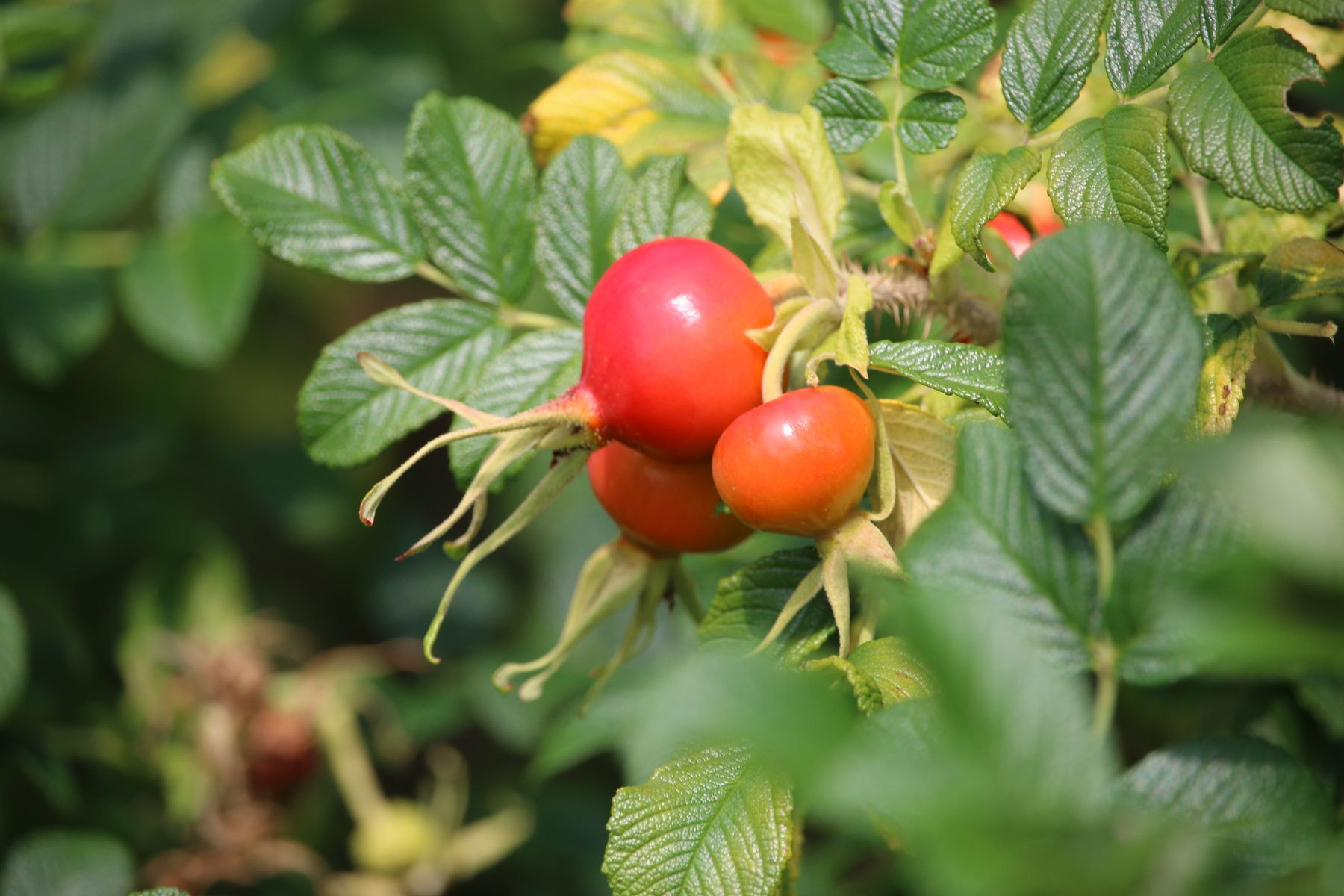
Place: Rose Garden
It often grows gregariously in sandy soil near the seashore. It's about 1 to 1.5m high, and its branches are covered by minute thorns.
Jan.
Feb.
Mar.
Apr.
May
Jun.
Jul.
Aug.
Sep.
Oct.
Nov.
Dec.
Obagiboushi (Plantain lily), (Hosta sieboldiana)
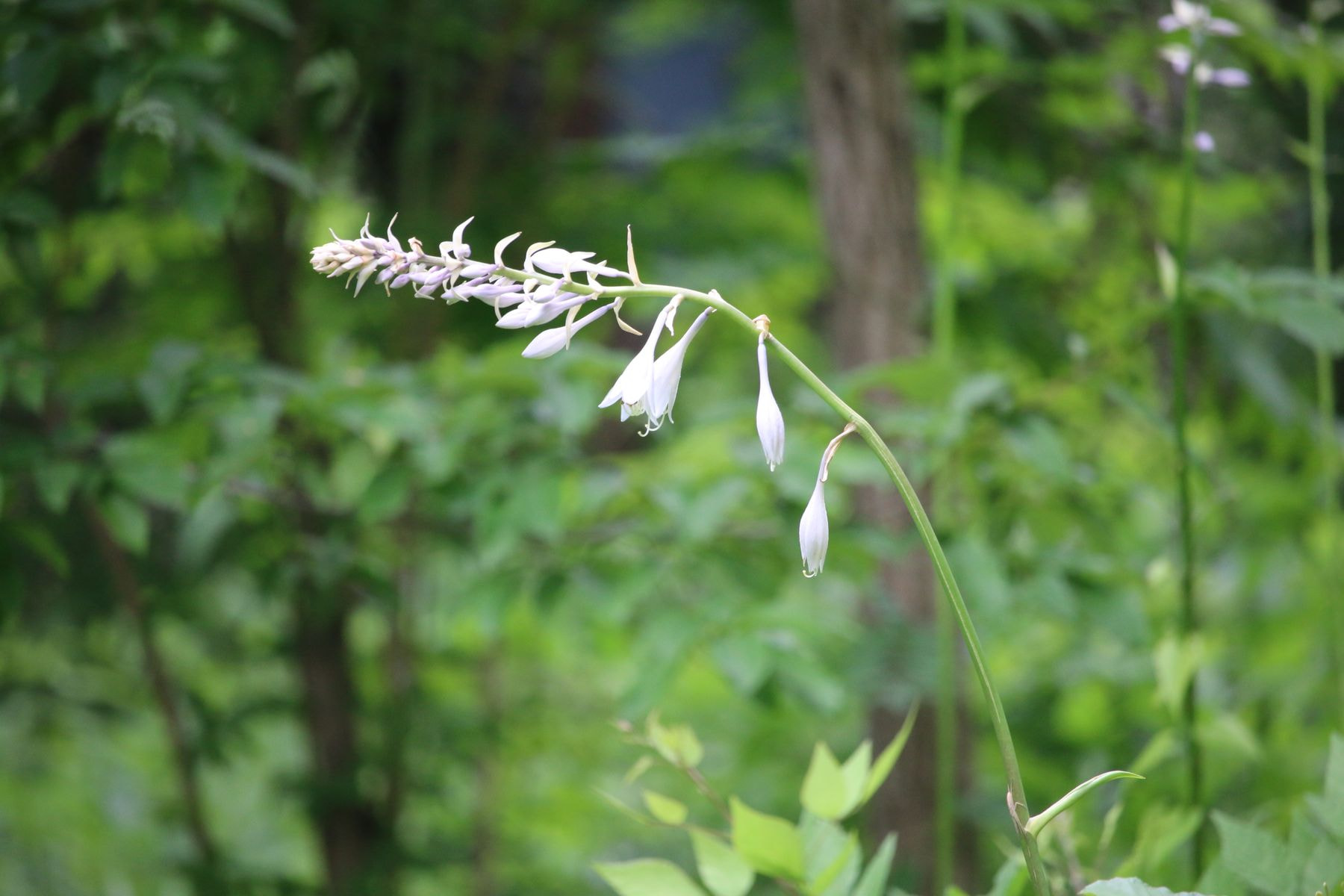
Place: Ninomaru Grove
This perennial grows in grass fields in the mountains or hills.
Jan.
Feb.
Mar.
Apr.
May
Jun.
Jul.
Aug.
Sep.
Oct.
Nov.
Dec.
Himawari ʻHaruka no Himawariʼ (Sunflower ʻHaruka no Himawariʼ), (Helianthus annuus)
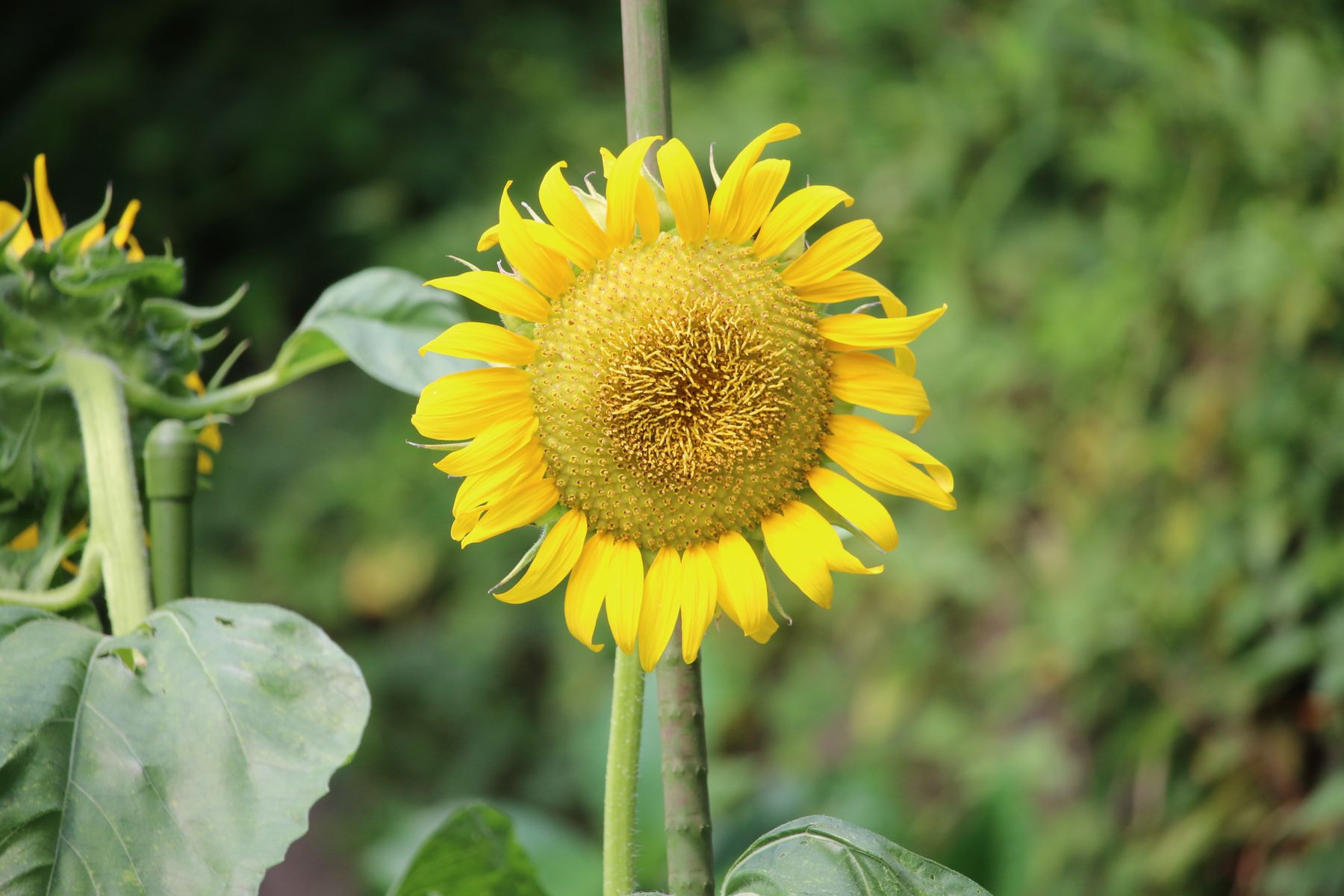
Place: Around Honmaru Resthouse
This annual plant is native to North America. It’s named after an elementary school student who died in the Great Hanshin Awaji earthquake.
Jan.
Feb.
Mar.
Apr.
May
Jun.
Jul.
Aug.
Sep.
Oct.
Nov.
Dec.
Autumn(September~October~November)
Higanbana (Red spider lily), (Lycoris radiata)
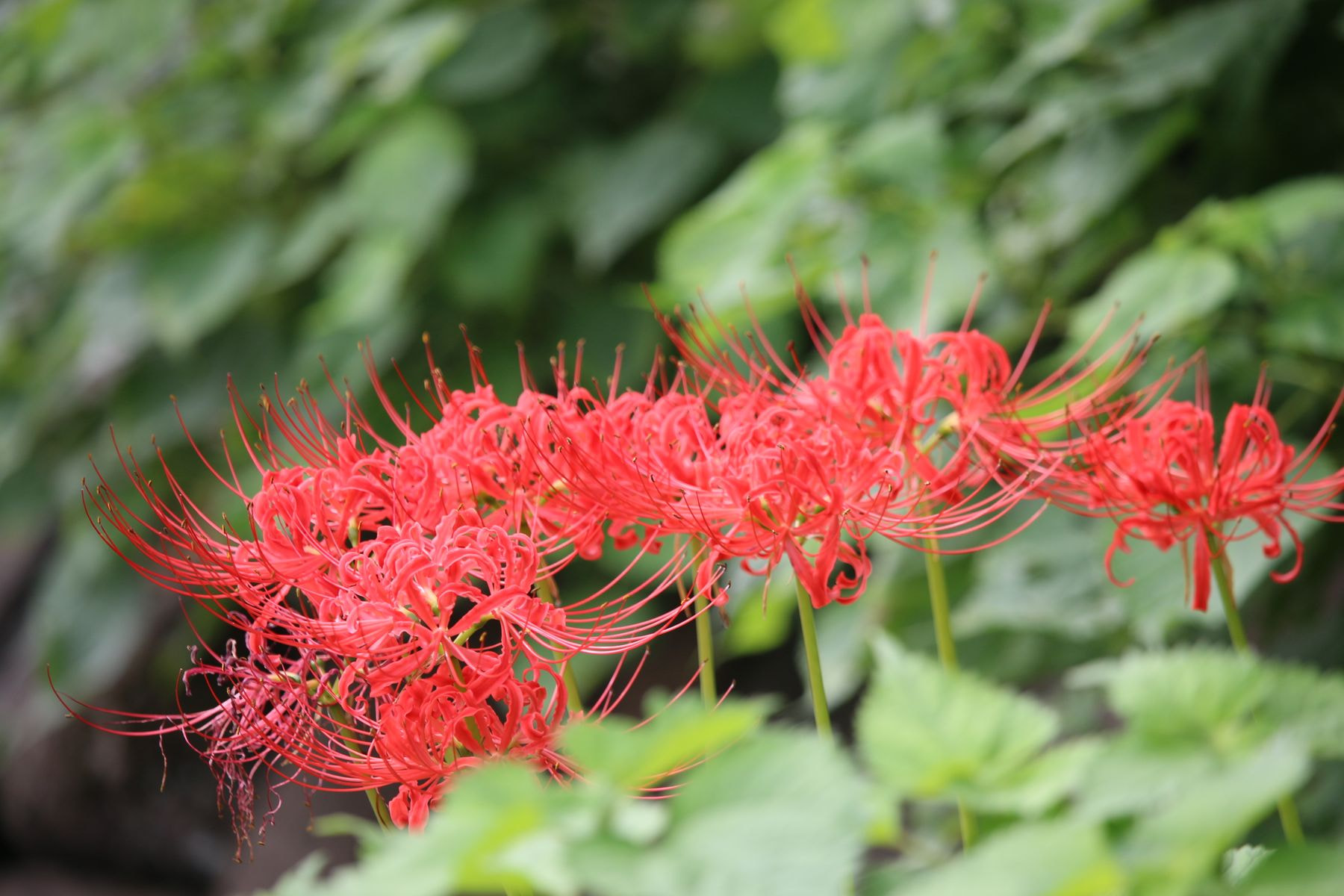
Place: Around Obansho Guardhouse and Hakucho-bori Moat
It's alternatively called "Manjushage". This perennial grows gregariously in and around human settlements.
Jan.
Feb.
Mar.
Apr.
May
Jun.
Jul.
Aug.
Sep.
Oct.
Nov.
Dec.
Jugatsuzakura (Jugatsuzakura cherry tree), (Cerasus x subhirtella ʻAutumnalisʼ)
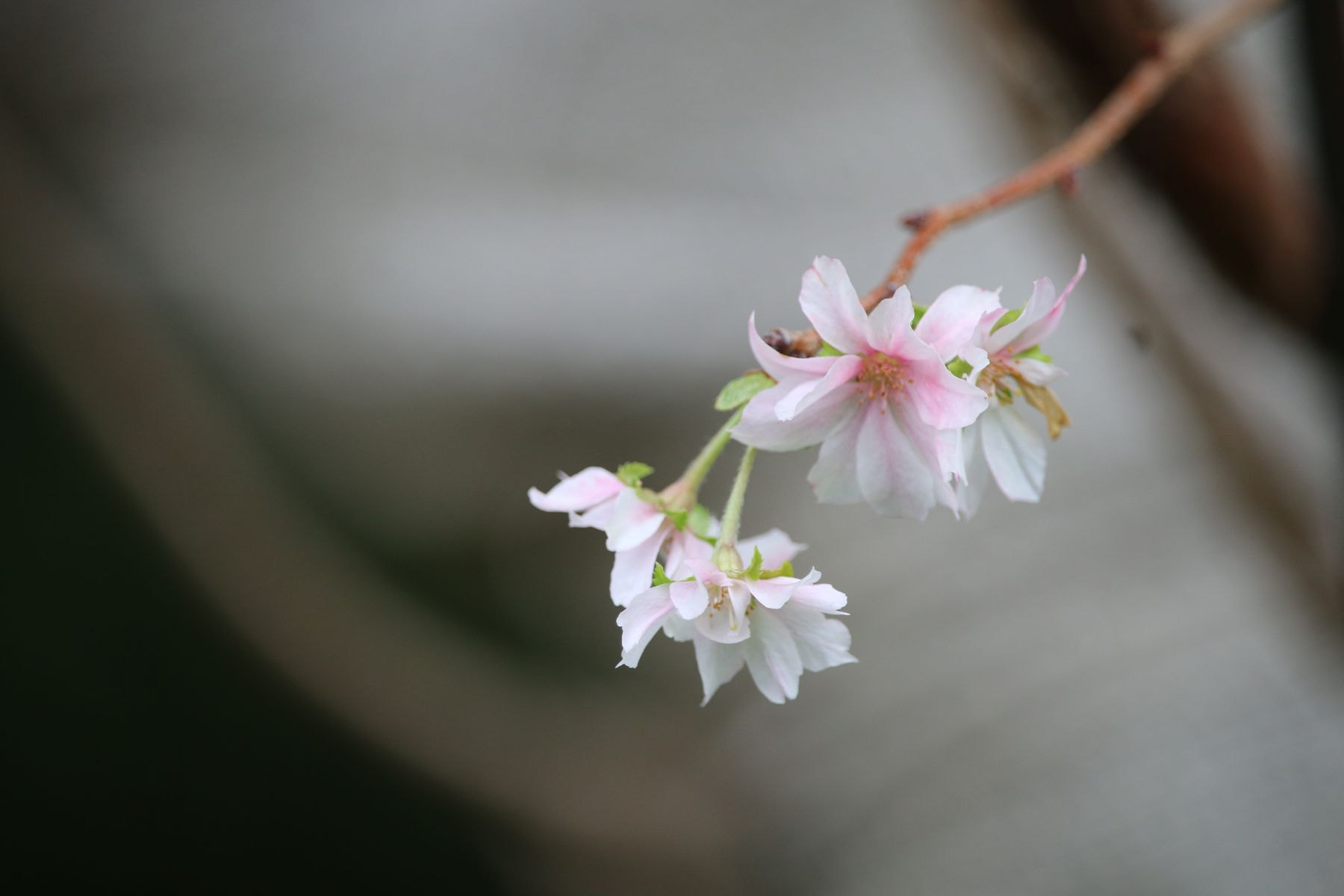
Place: Around Honmaru Resthouse
It blooms twice a year on early April and on sometime between October and December. Its flowers are mostly in white, but there are species whose flowers are light pink or dark pink.
Jan.
Feb.
Mar.
Apr.
May
Jun.
Jul.
Aug.
Sep.
Oct.
Nov.
Dec.
Kinmokusei (Fragrant Olive), (Osmanthus fragrans var. aurantiacus)
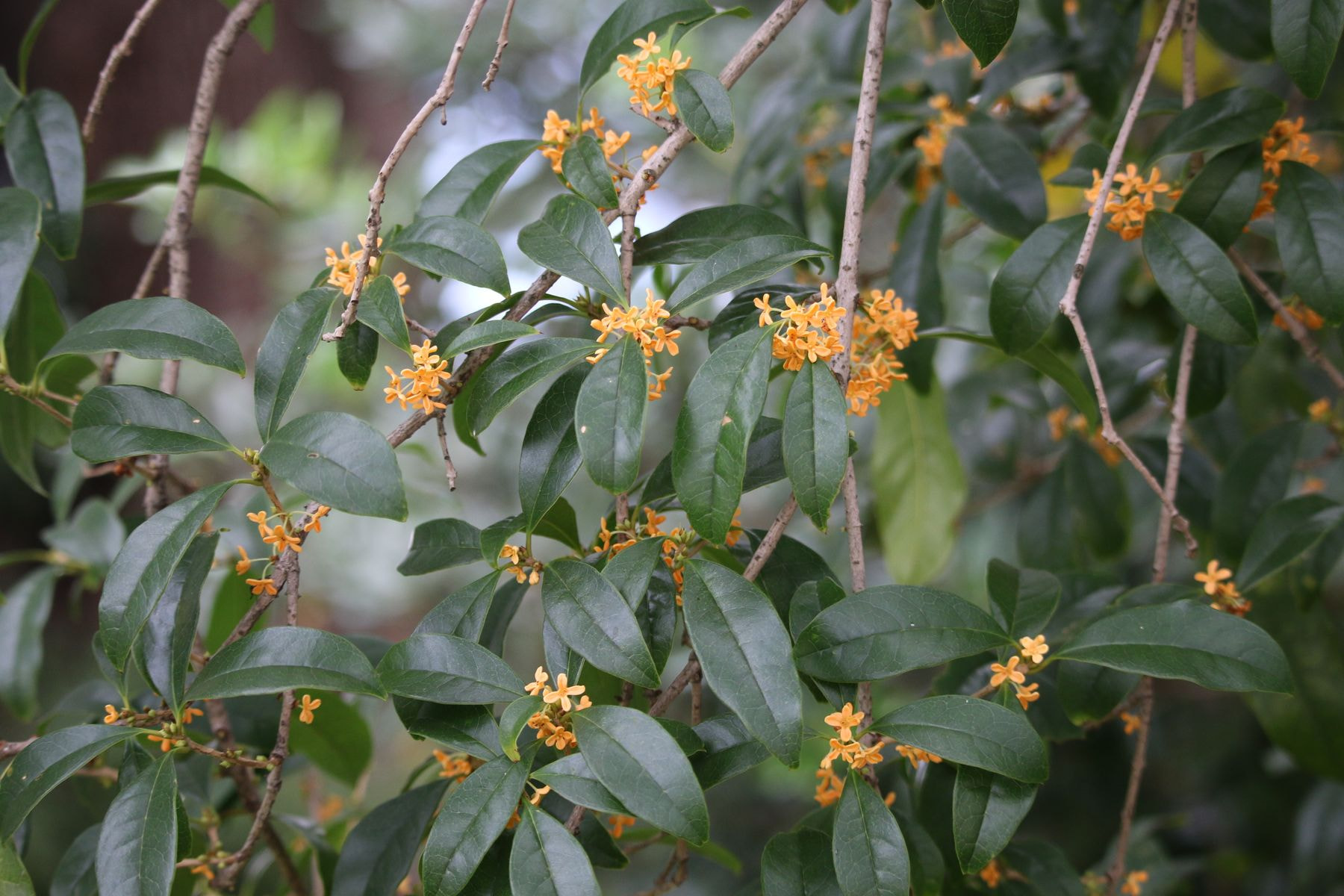
Place: Honmaru O-shibafu (Lawn), around Honmaru Resthouse
It’s native to China, and is a variant species of Ginmokusei (Osmanthus fragrans Lour. var. fragrans). It’s often planted gardens all over Japan.
Jan.
Feb.
Mar.
Apr.
May
Jun.
Jul.
Aug.
Sep.
Oct.
Nov.
Dec.
Otokoyouzome (Otokoyouzome viburnum), (Viburnum phlebotrichum)
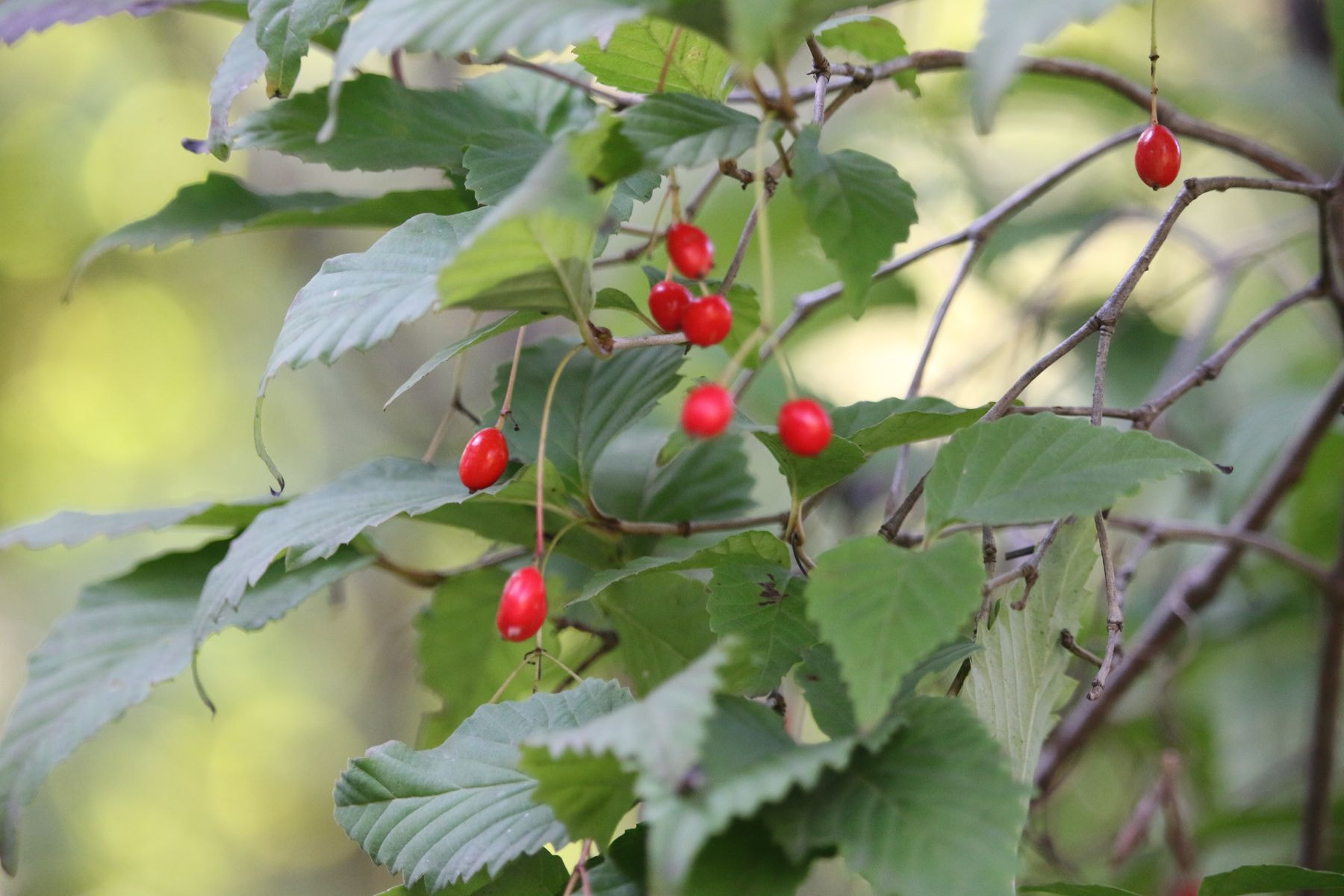
Place: Ninomaru grove, South of Orchard
It’s alternatively called "Koneso". It grows in sunny places in hills and mountains, and grows up to 2m approximately.
Jan.
Feb.
Mar.
Apr.
May
Jun.
Jul.
Aug.
Sep.
Oct.
Nov.
Dec.
Susuki (Japanese silver grass), (Miscanthus sinensis)
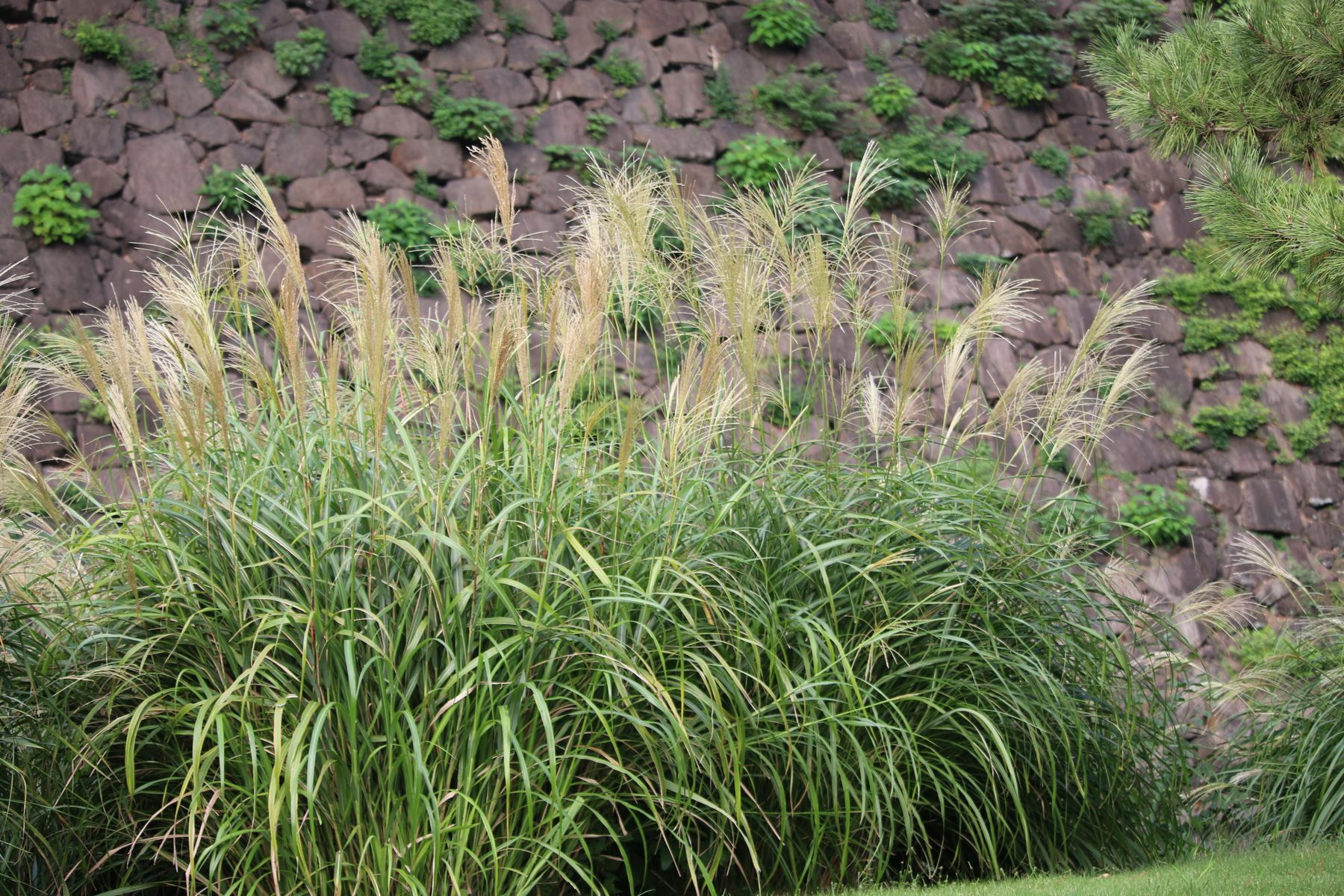
Place: Ninomaru Grove, around Hakucho-bori Moat
It's alternatively called "Kaya". This big perennial can often be seen in sunny places in plains or mountains.
Jan.
Feb.
Mar.
Apr.
May
Jun.
Jul.
Aug.
Sep.
Oct.
Nov.
Dec.
Sazanka (Sasanqua), (Camellia sasanqua)
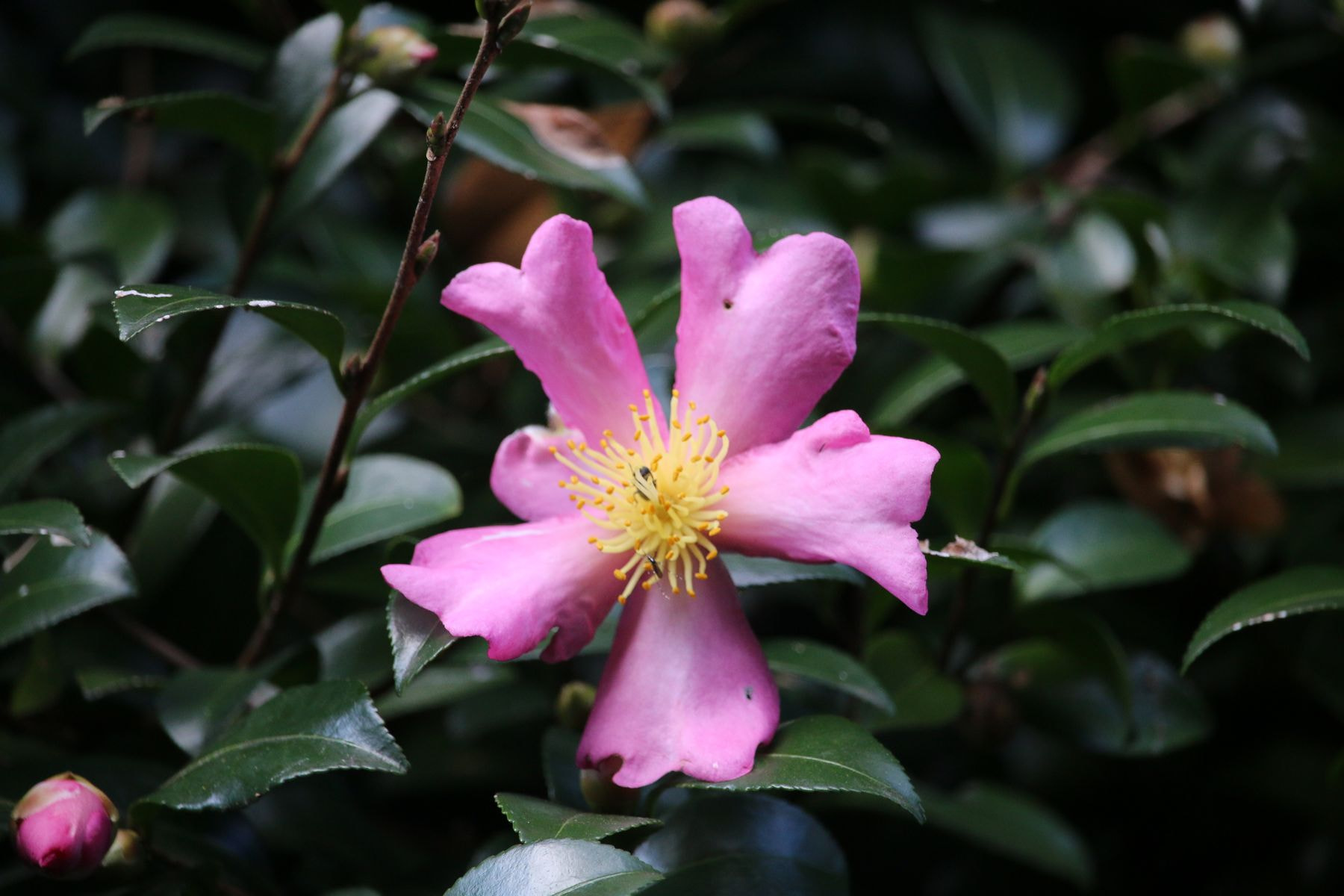
Place: North of Tenshudai, around Fujimi Tamon
It's native to Japan. Having may garden species, and Sazanka often are planted in gardens and parks.
Jan.
Feb.
Mar.
Apr.
May
Jun.
Jul.
Aug.
Sep.
Oct.
Nov.
Dec.
Hototogisu (Japanese toad lily), (Tricyrtis hirta)
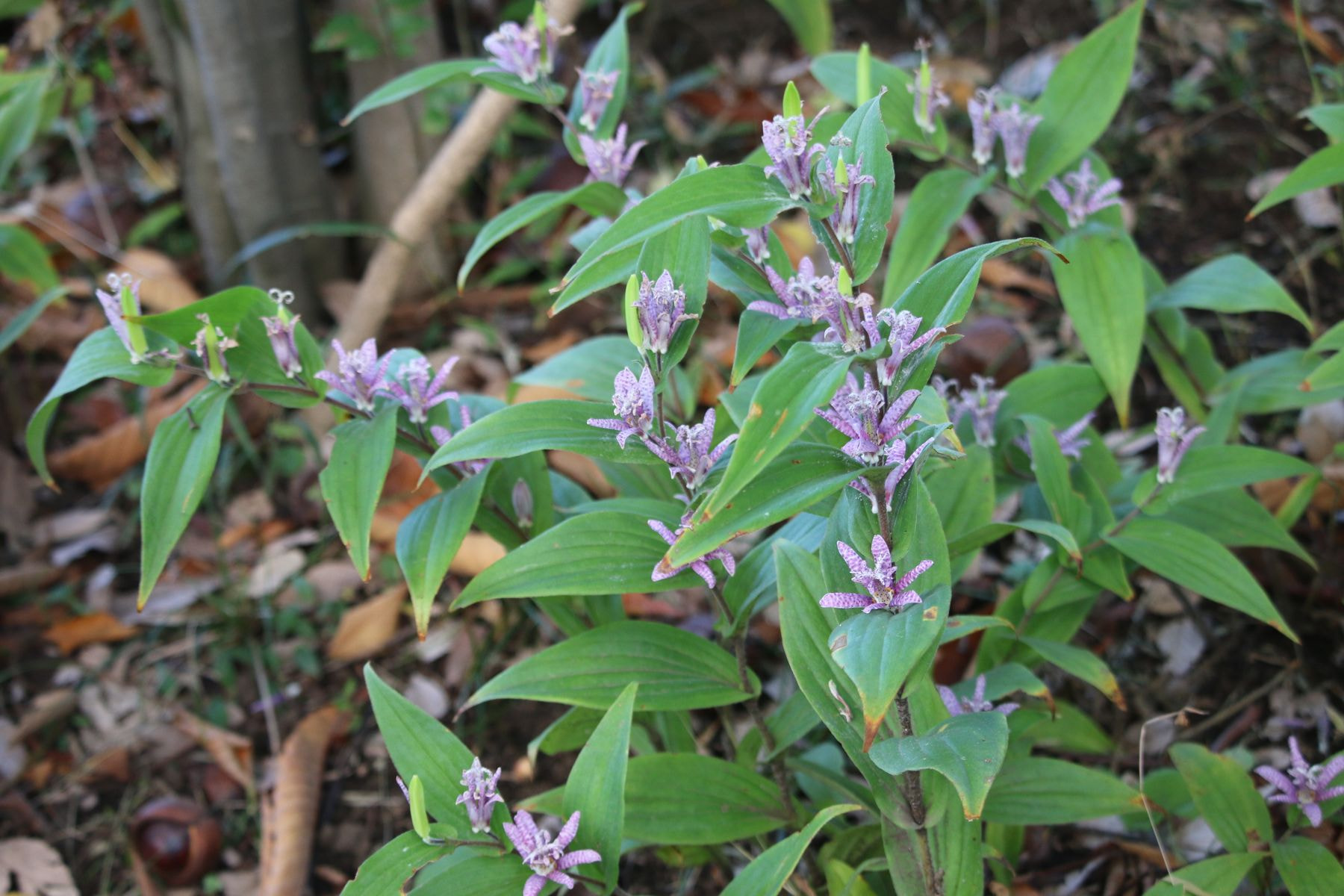
Place: South of Orchard, Ninomaru Grove
This perennial grows in half-shaded places in mountains or damp cliffs.
Jan.
Feb.
Mar.
Apr.
May
Jun.
Jul.
Aug.
Sep.
Oct.
Nov.
Dec.
Fuyuzakura (Fuyuzakura cherry tree), (Cerassus x parvifolia ʻParvifoliaʼ)
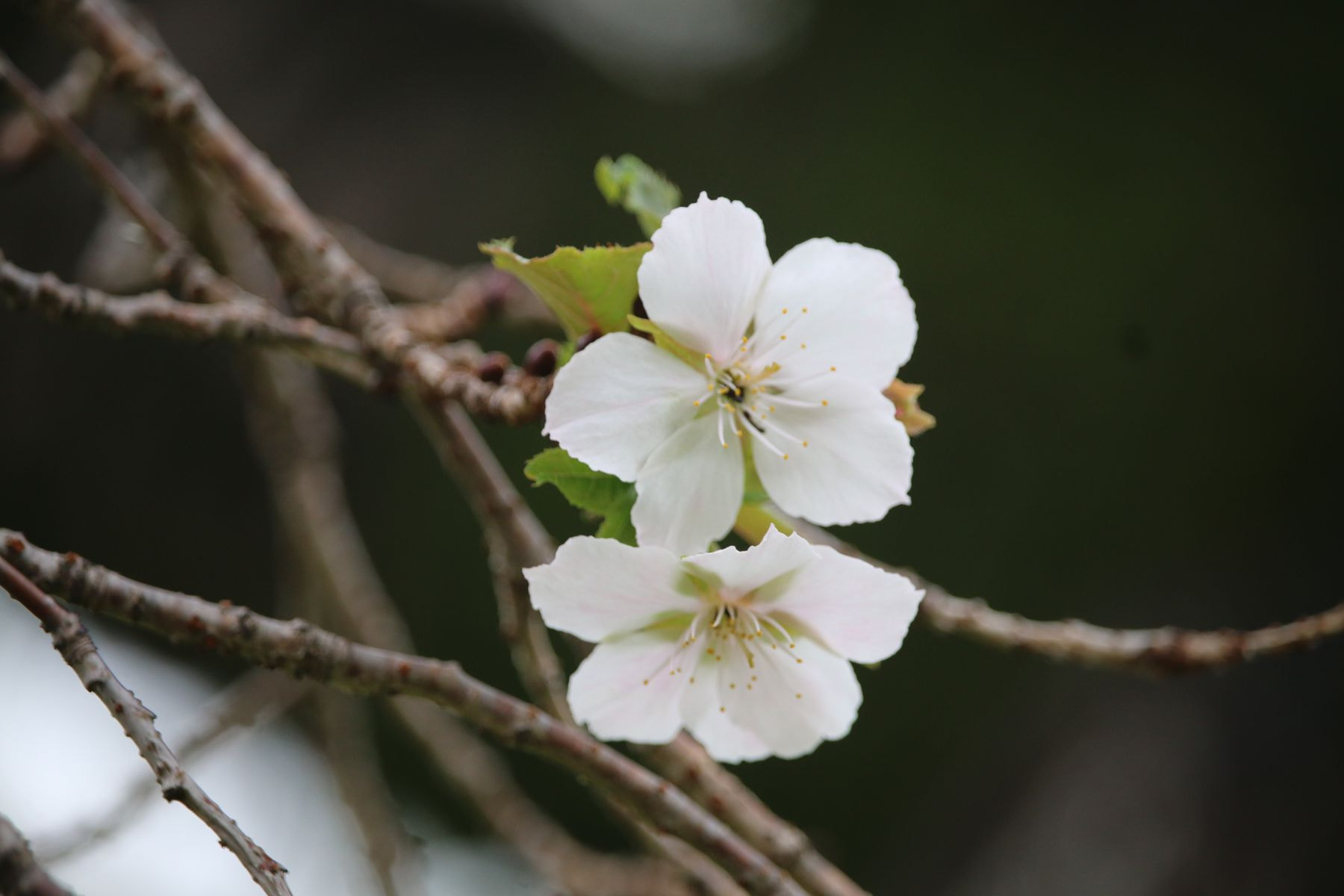
Place: Honmaru O-shibafu (Lawn)
It's a species that belong to the lineage of Mamezakura (Prunus incisa Thunb. ex Murray), and blooms twice a year on early April and on sometime between October to December.
Jan.
Feb.
Mar.
Apr.
May
Jun.
Jul.
Aug.
Sep.
Oct.
Nov.
Dec.
Nanten (Nandina), (Nandina domestica)
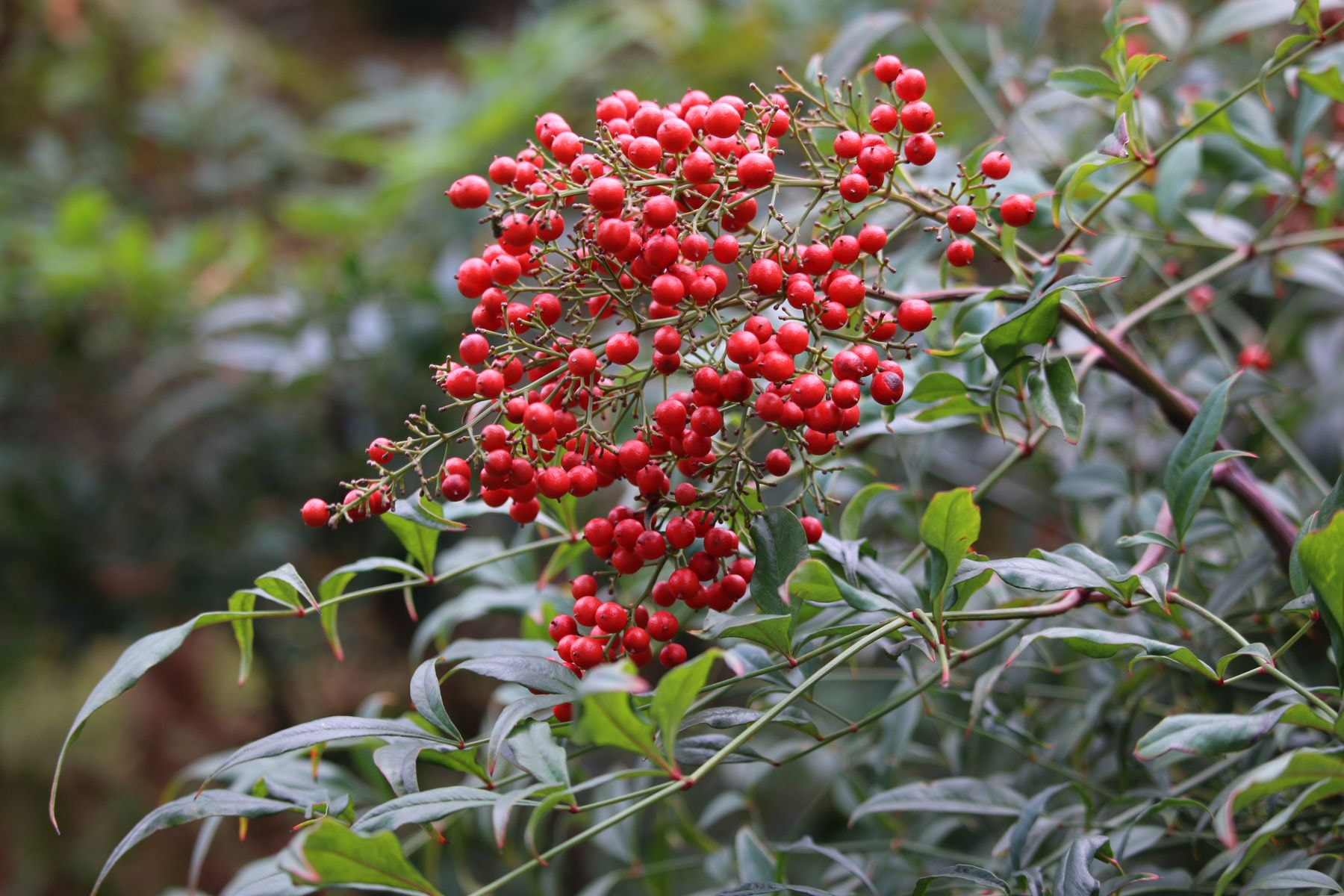
Place: Around Bamboo Garden, East of Suwano Chaya
While it sometimes grows naturally in mountains in warm area, it is often planted in gardens.
Jan.
Feb.
Mar.
Apr.
May
Jun.
Jul.
Aug.
Sep.
Oct.
Nov.
Dec.
Tsubaki ʻShirowabisukeʼ (Camellia ʻShirowabisukeʼ), (Camellia japonica ʻShirowabisukeʼ)
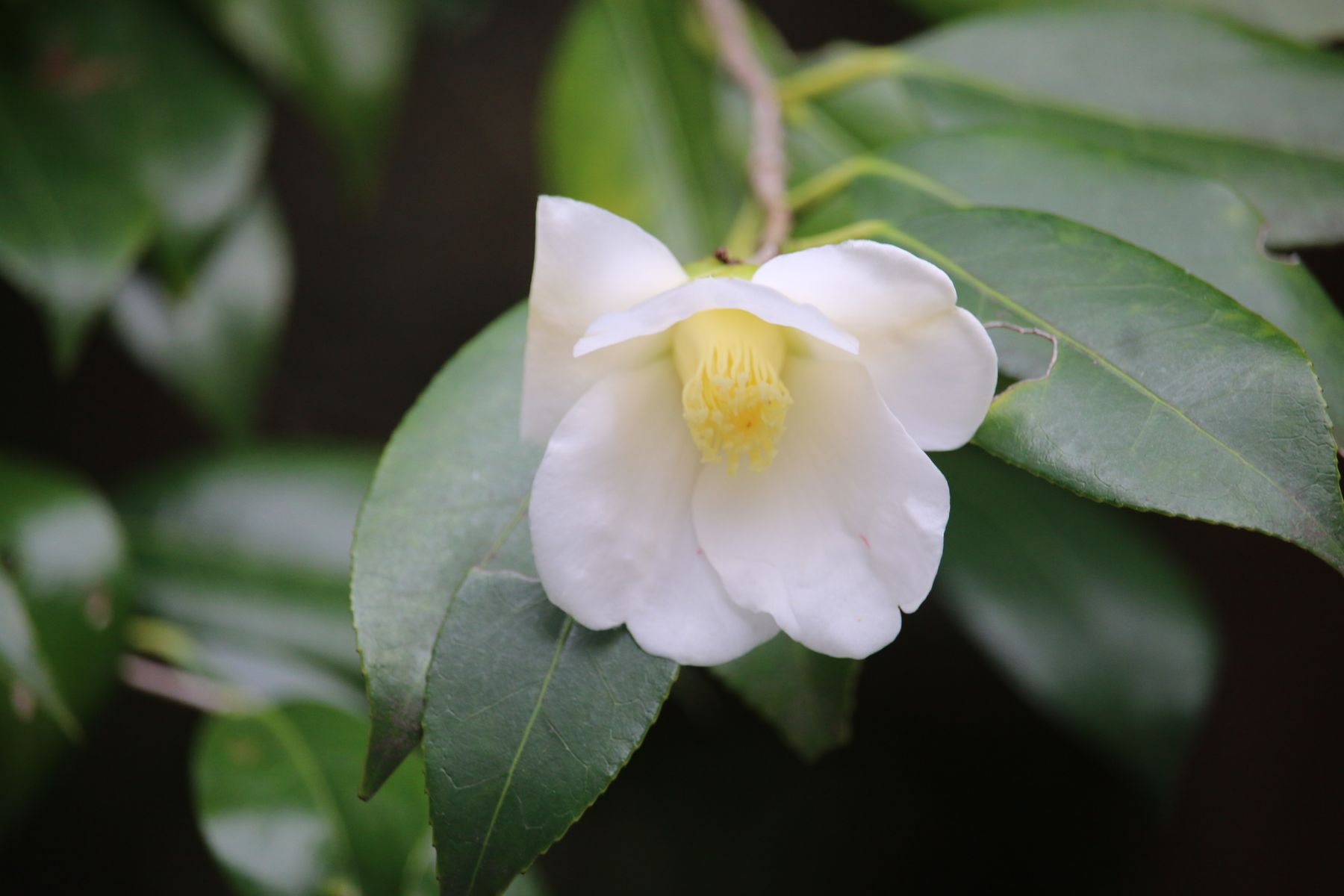
Place: West of Shoryobu Chosha, Ninomaru Garden
It is a hybrid of camellia and Chanoki (Camellia sinensis), and is a garden species. It has trumpet-shaped flowers between November and early March.
Jan.
Feb.
Mar.
Apr.
May
Jun.
Jul.
Aug.
Sep.
Oct.
Nov.
Dec.
Kantsubaki (Sasanqua 'Shishigashiraʼ), (Camellia sasanqua ʻShishigashiraʼ)
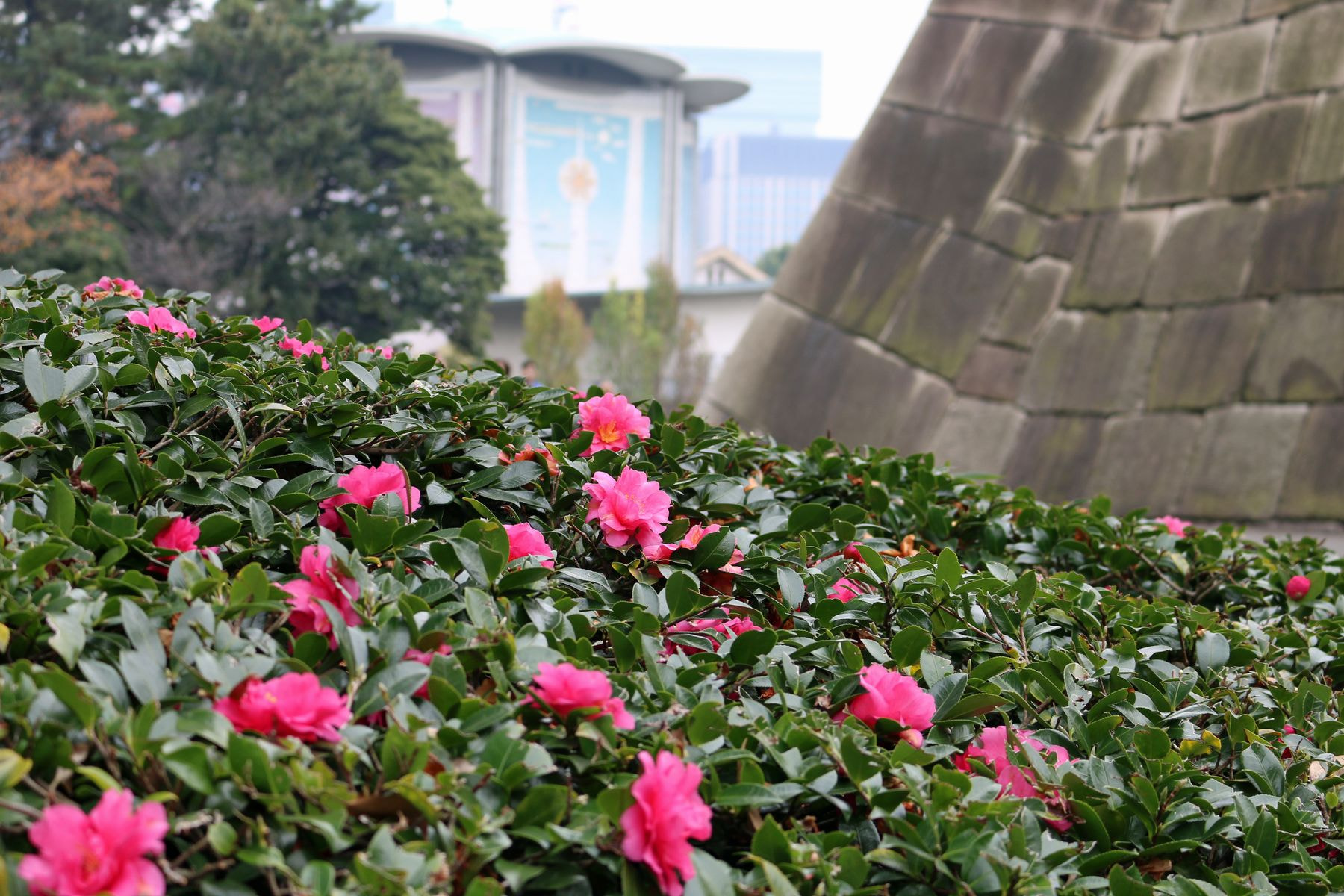
Place: North of Tenshudai, Ninomaru Garden
It is said to be a garden species of Sasanqua,it blooms bright red double flowers and colors the garden in winter. It is often used for garden trees because it is resistant to pruning.
Jan.
Feb.
Mar.
Apr.
May
Jun.
Jul.
Aug.
Sep.
Oct.
Nov.
Dec.
Manryo (Coral ardisia), (Ardisia crenata)
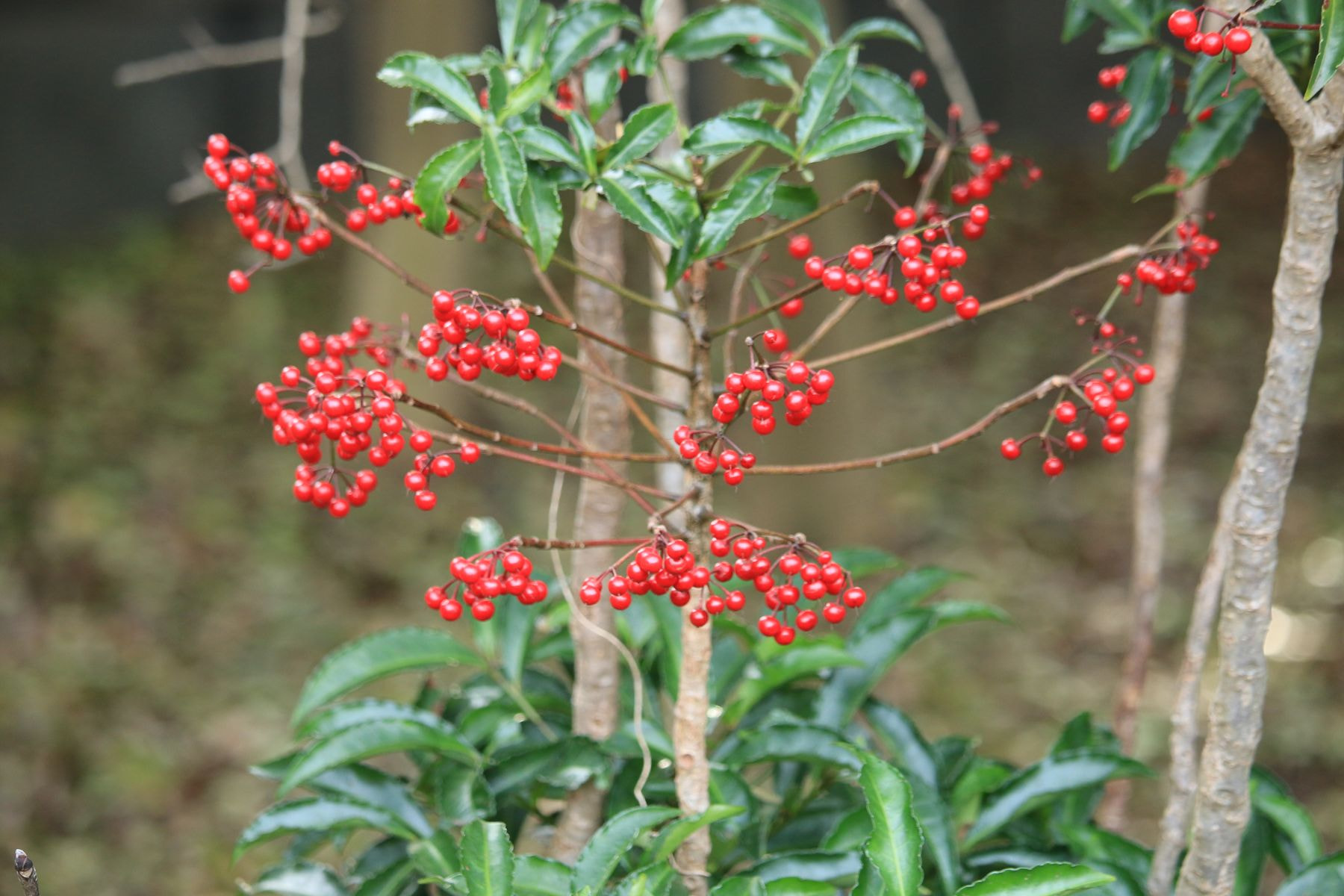
Place: South of Orchard, Around Honmaru Resthousee
It grows naturally in groves of warm places, and is often grown for ornamental purposes.
Jan.
Feb.
Mar.
Apr.
May
Jun.
Jul.
Aug.
Sep.
Oct.
Nov.
Dec.
Senryo (Glabrous sarcandra herb), (Sarcandra glabra)
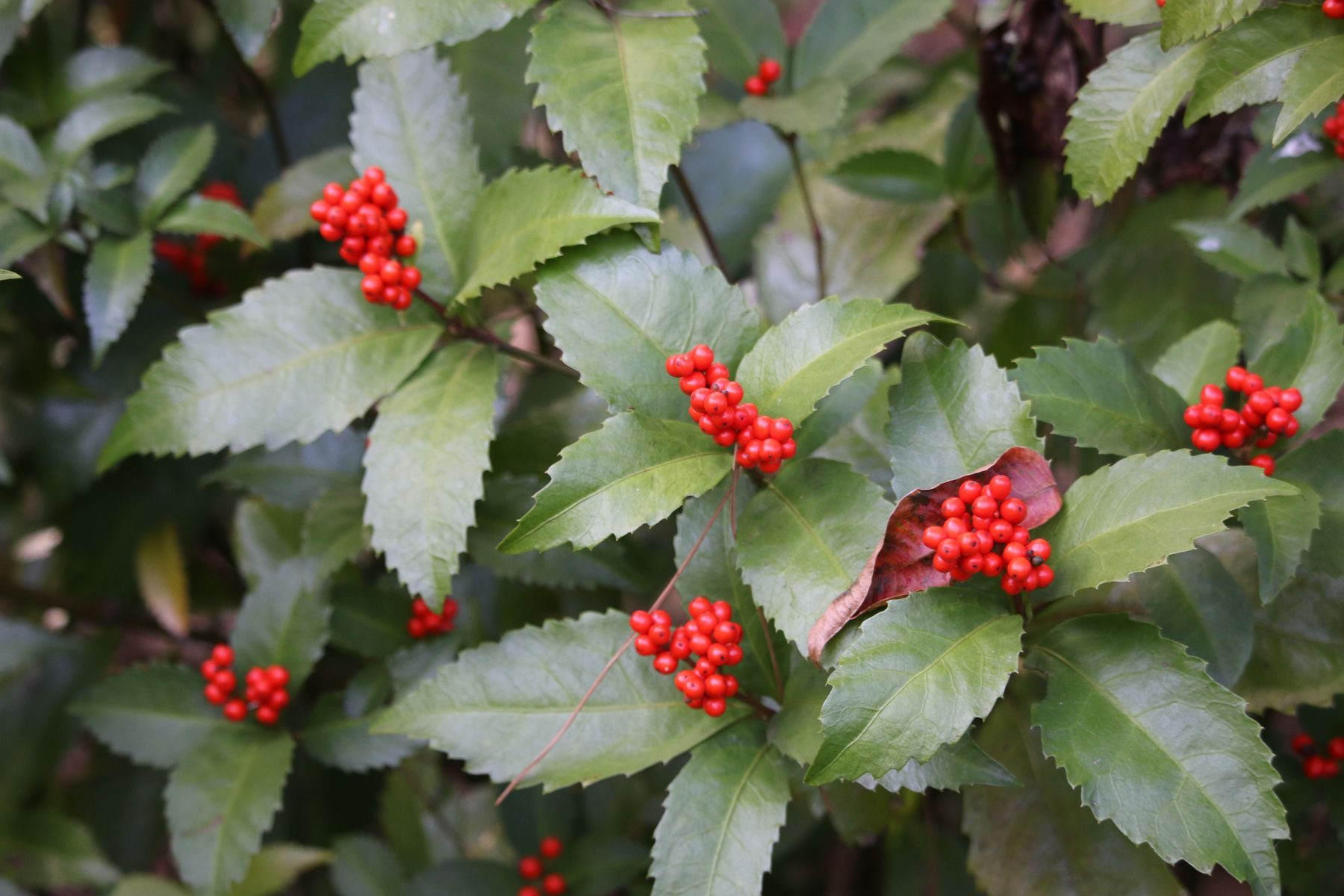
Place: South of Orchard, Ninomaru Garden
It grows naturally in groves of warm places, and grows up to 50 to 80 cm.
Jan.
Feb.
Mar.
Apr.
May
Jun.
Jul.
Aug.
Sep.
Oct.
Nov.
Dec.
Winter(December~January~February)
Yabutsubaki (Camellia), (Camellia japonica)
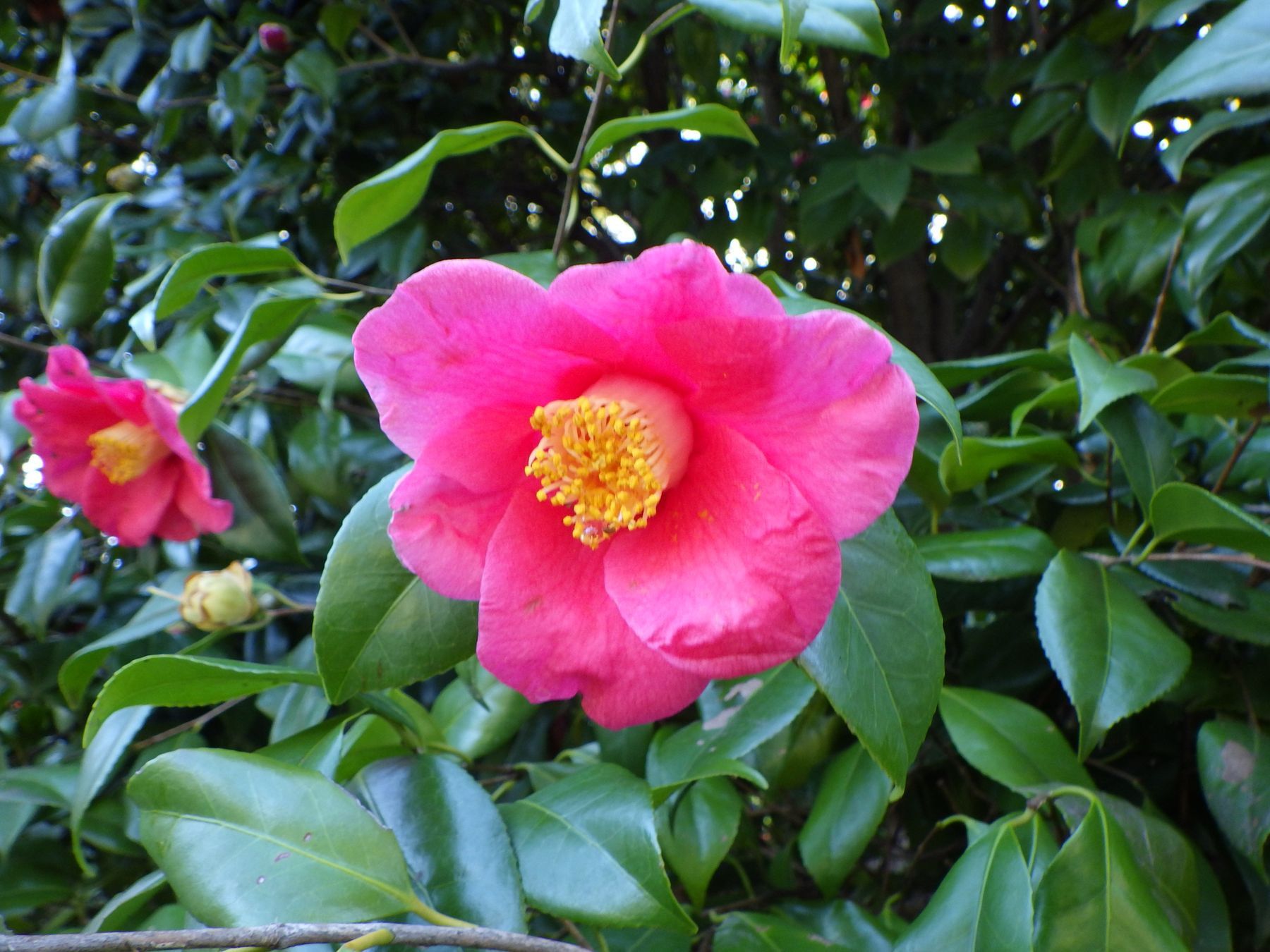
Place: North of Honmaru Resthouse, South of Orchard
It grows in neashore area, or mountains, and grows as big as 10 to 15m.
Jan.
Feb.
Mar.
Apr.
May
Jun.
Jul.
Aug.
Sep.
Oct.
Nov.
Dec.
Ume ʻKoutoujiʼ (Japanese apricot ʻKoutoujiʼ), (Prunus mume ʻKoutoujiʼ)
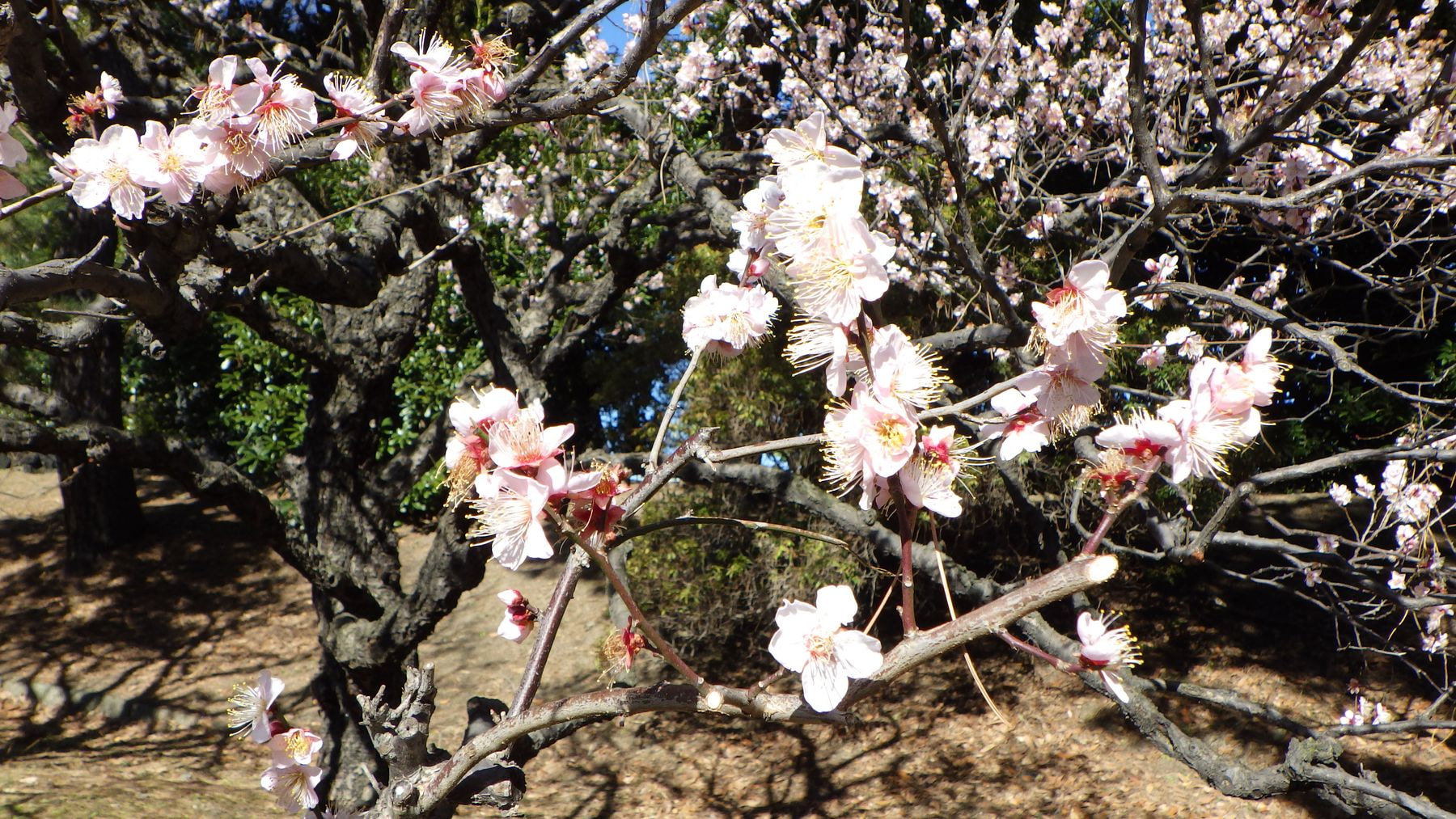
Place: Around Bairinzaka
It's native to China. It's often cultivated in gardens or fields. There exist many garden species of Prunus mume.
Jan.
Feb.
Mar.
Apr.
May
Jun.
Jul.
Aug.
Sep.
Oct.
Nov.
Dec.
Suisen (Narcissus), (Narcissus tazetta var.chinensis)
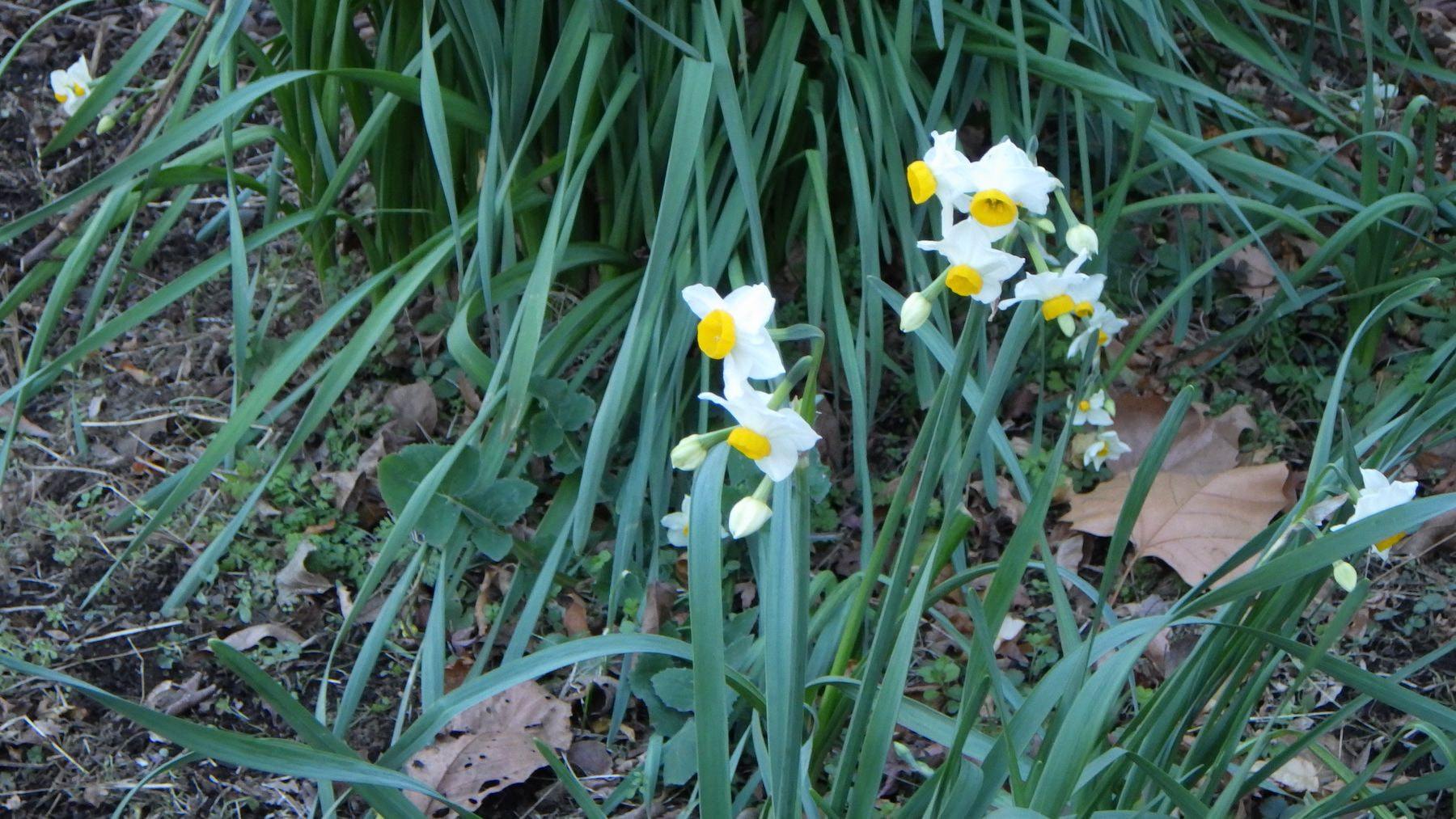
Place: Ninomaru Garden
While it grows in coastal places in warm region, they are said to have been planted before instead of a volunteer plant.
Jan.
Feb.
Mar.
Apr.
May
Jun.
Jul.
Aug.
Sep.
Oct.
Nov.
Dec.
Soshinrobai (Winter sweet), (Chimonanthus praecox f. concolor)
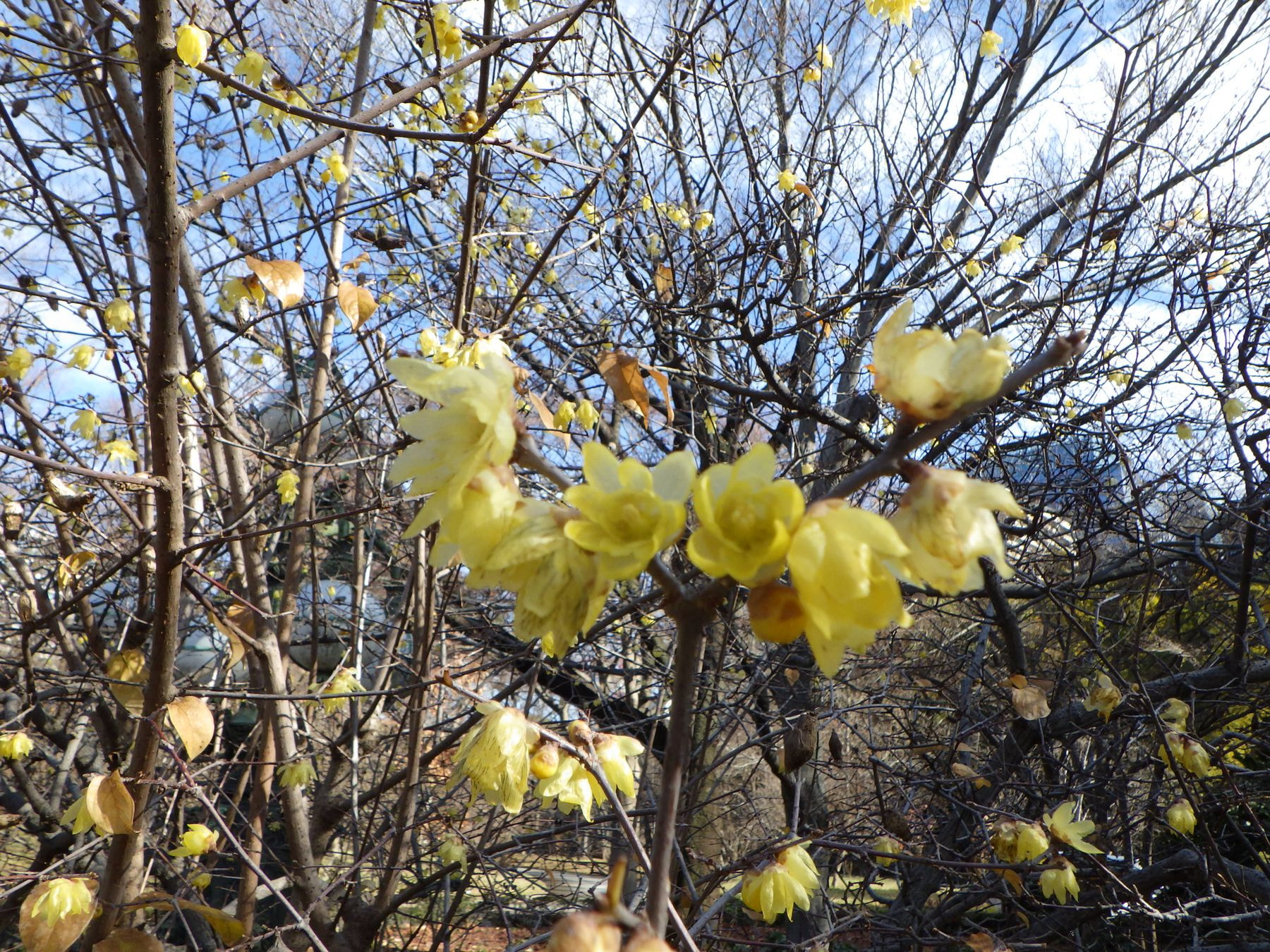
Place: West of Ninomaru Resthouse, South of Orchard
It's native to China. It has a little bigger flowers than Robai (Chimonanthus praecox), and its inner tepals are in yellow.
Jan.
Feb.
Mar.
Apr.
May
Jun.
Jul.
Aug.
Sep.
Oct.
Nov.
Dec.
Shimobashira (Japanese collinsonia), (Collinsonia japonica)
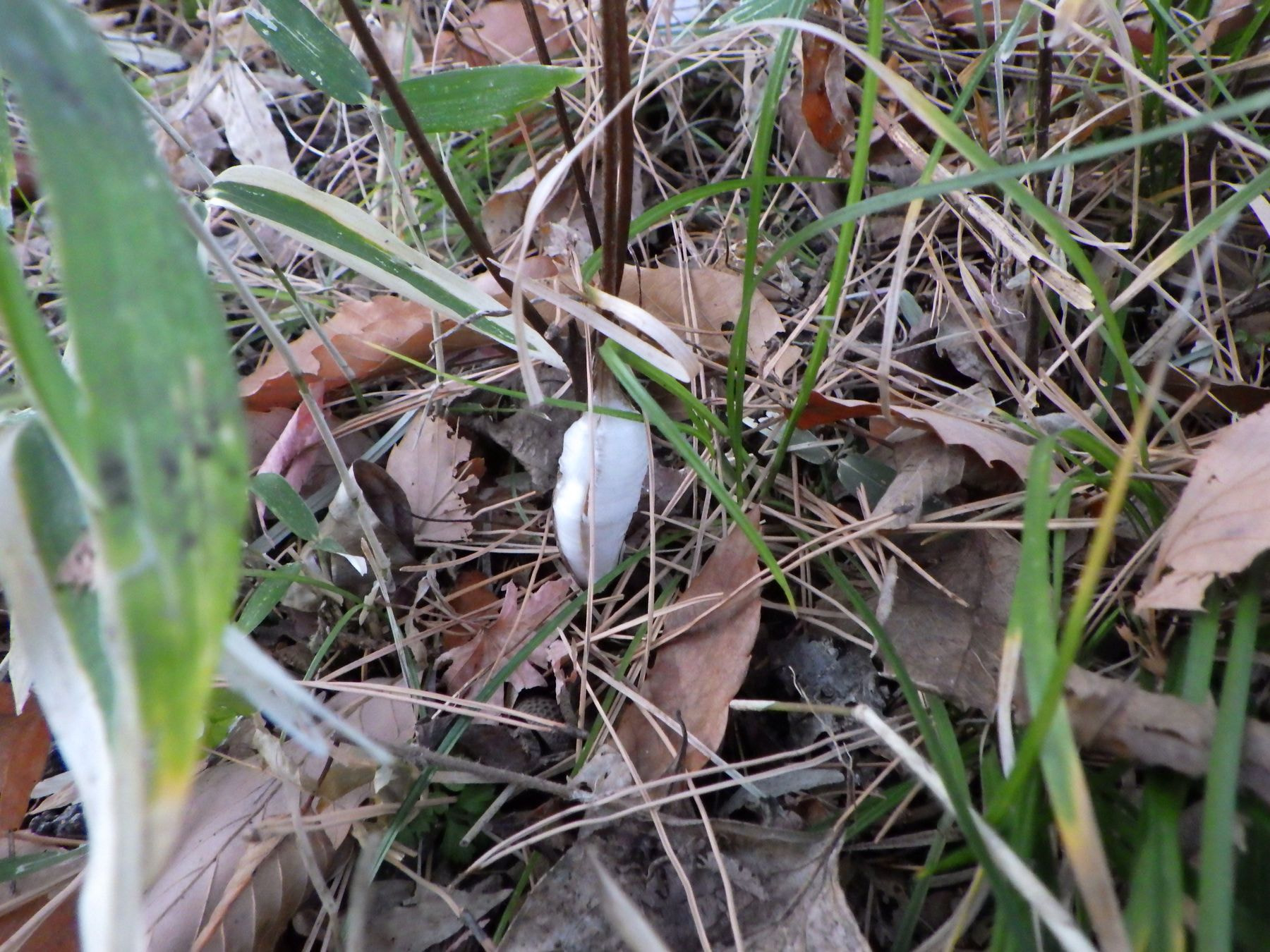
Place: Ninomaru Grove
This perennial grows under the leafy shade of trees in the mountains. In the freezing early mornings during winter, you can see frost columns (shimobashira). That's why these are named shimobashira in Japanese.
Jan.
Feb.
Mar.
Apr.
May
Jun.
Jul.
Aug.
Sep.
Oct.
Nov.
Dec.
Ume ʻYaeyabaiʼ (Japanese apricot ʻYaeyabaiʼ), (Prunus mume ʻYaeyabaiʼ)
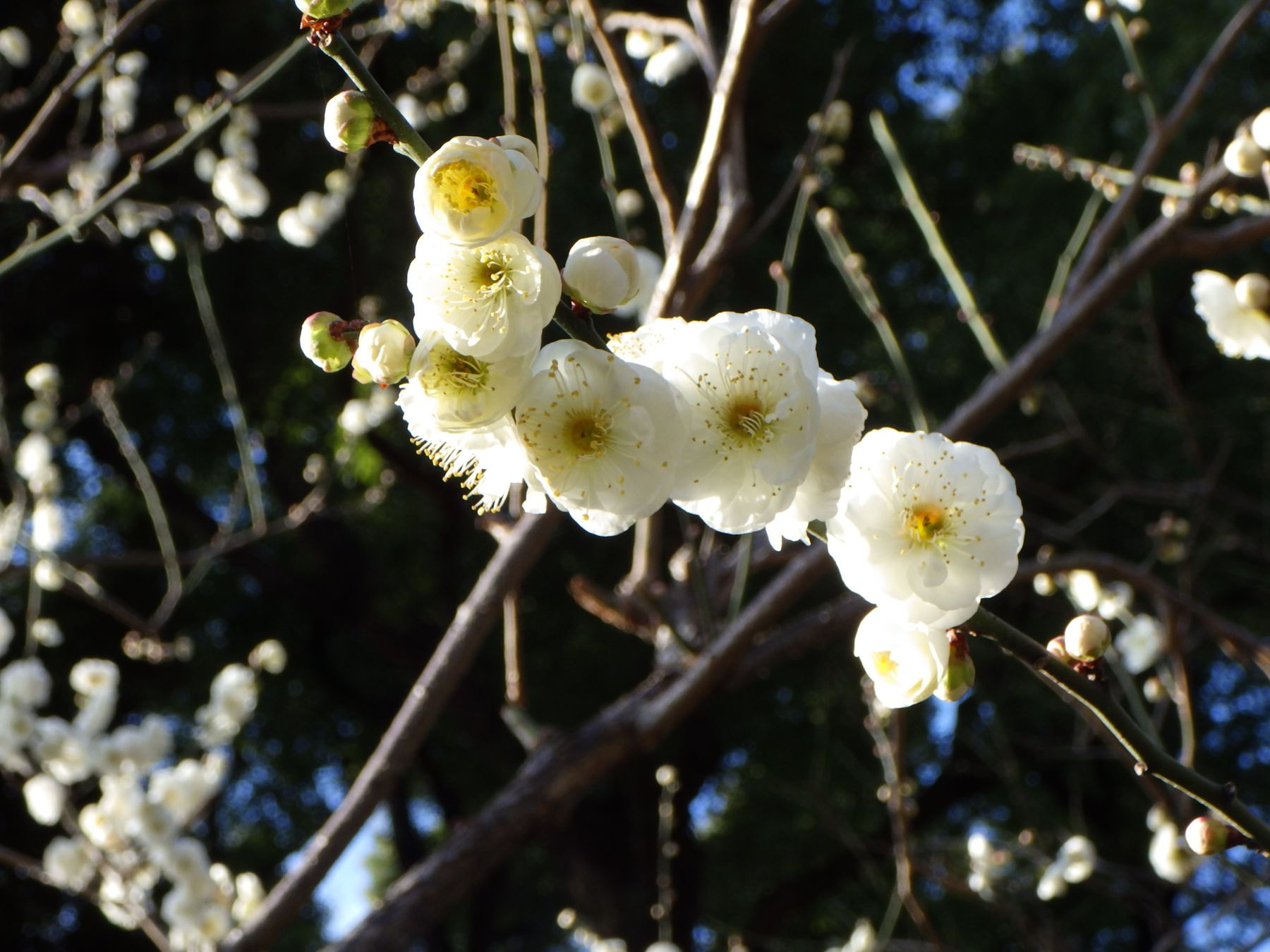
Placem: Around Bairinzaka
It's native to China. It's often cultivated in gardens or fields. There exist many garden species of Prunus mume.
Jan.
Feb.
Mar.
Apr.
May
Jun.
Jul.
Aug.
Sep.
Oct.
Nov.
Dec.
Kanzakura (Kanzakura cherry tree), (Cerasus x kanzakura)
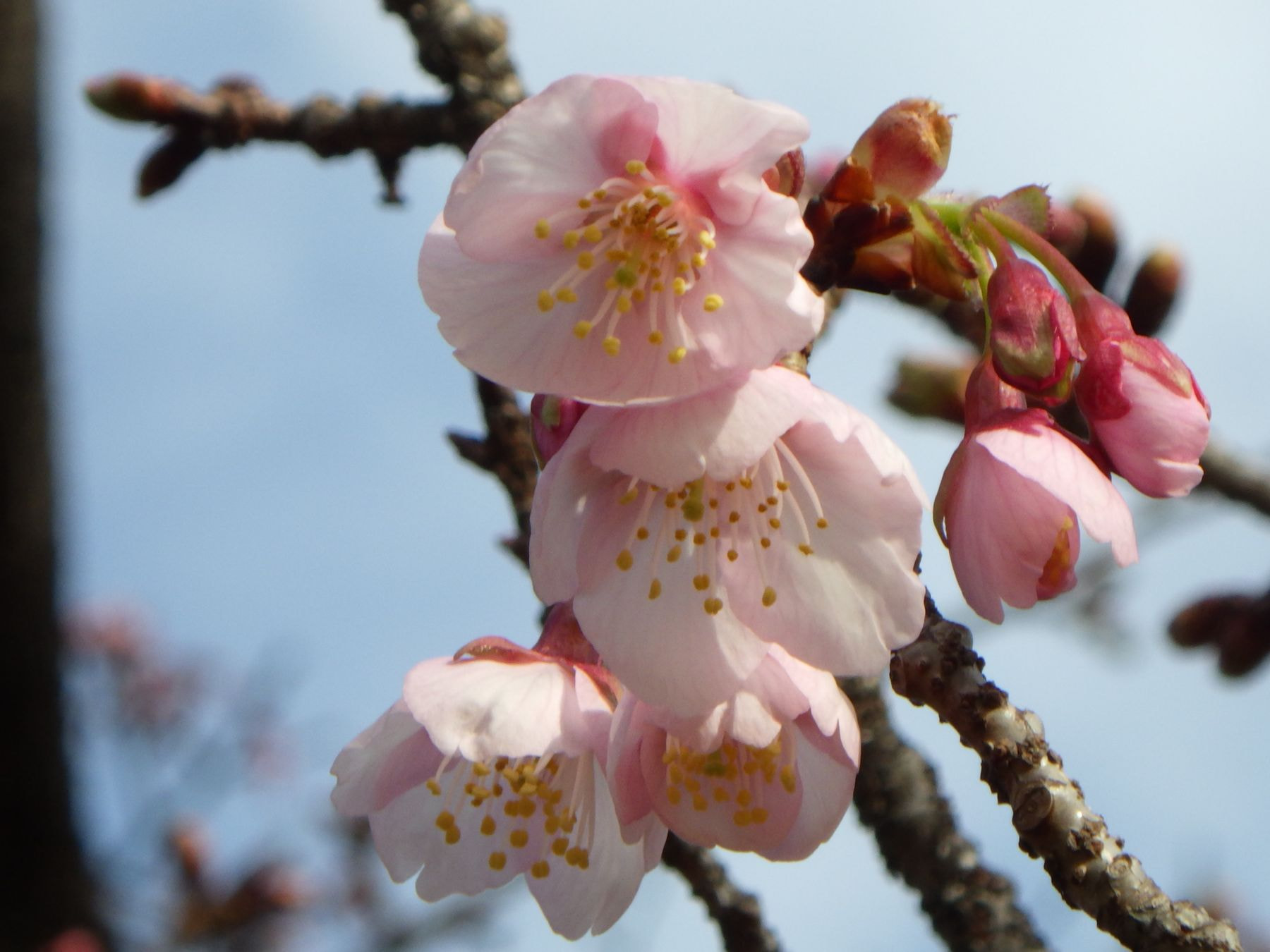
Place: Honmaru O-shibafu (Lawn)
It is said to be a hybrid of Kanhizakura (Cerasus campanulata).
Jan.
Feb.
Mar.
Apr.
May
Jun.
Jul.
Aug.
Sep.
Oct.
Nov.
Dec.
Shinamansaku (Chinese witch hazel), (Hamamelis mollis)
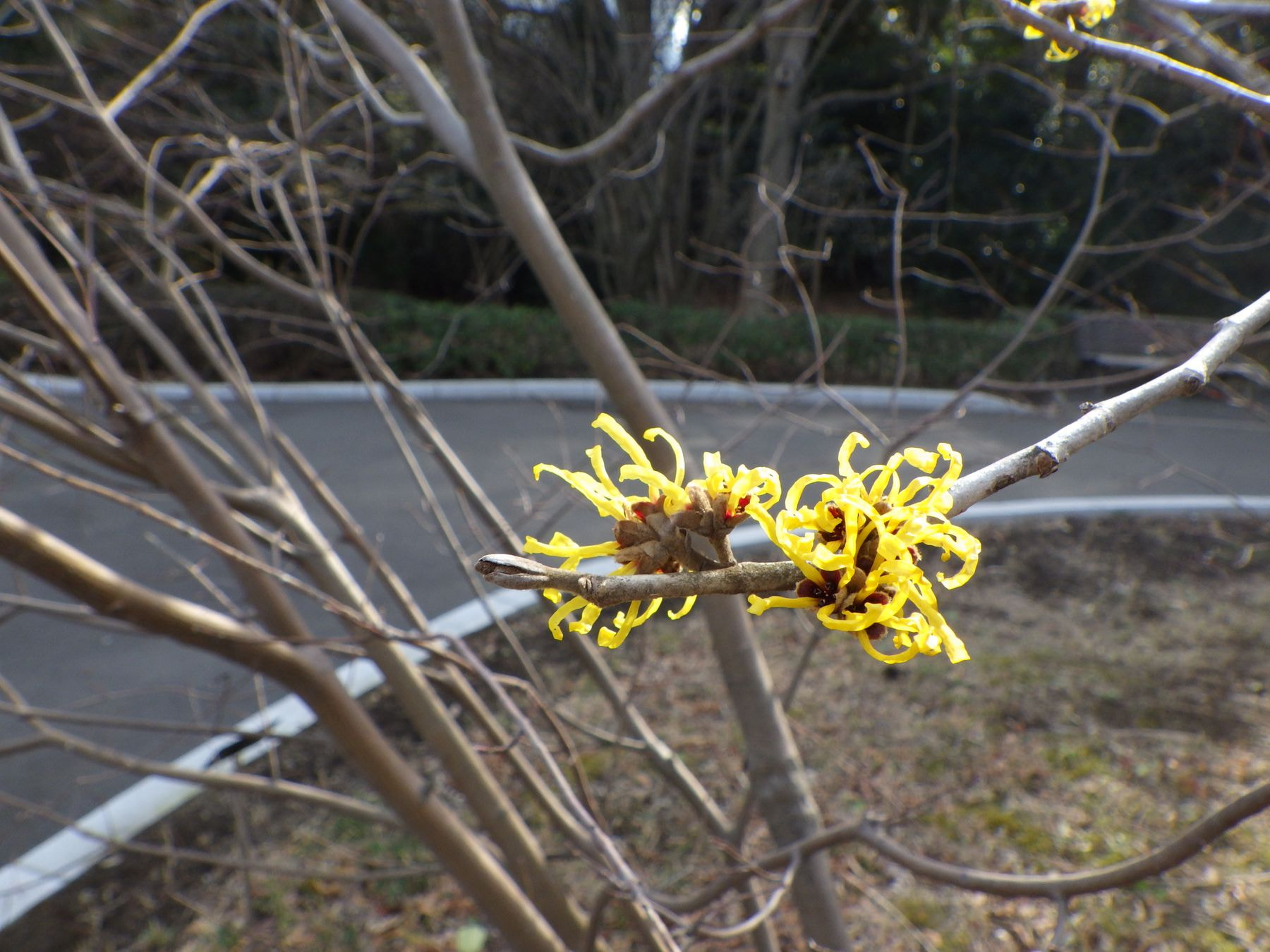
Place: South of Orchard, around Obansho Guardhouse
It is an endemic species of Japan and that grows naturally in coastal area occasionally, and grows up to 2 to 4m. It has white flowers at the tip of branches around June.
Jan.
Feb.
Mar.
Apr.
May
Jun.
Jul.
Aug.
Sep.
Oct.
Nov.
Dec.
Fukujusou (Adonis), (Adonis ramosa)
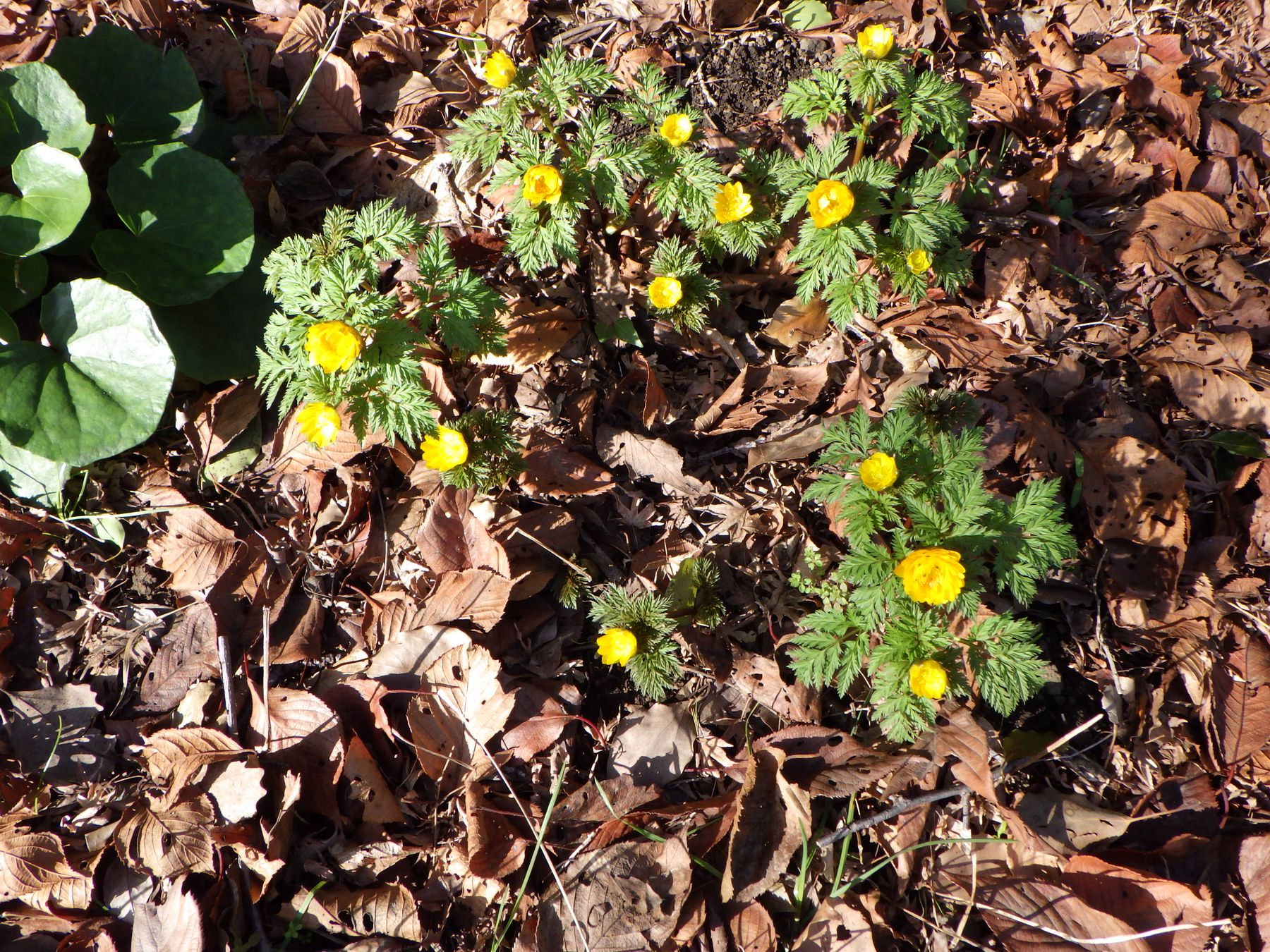
Place: Around Fujimi Tamon
This perennial can often be found in East Japan. While it's often cultivated, as its flower season is around a turn of the year, the flower is often used for decoration of the new year.
Jan.
Feb.
Mar.
Apr.
May
Jun.
Jul.
Aug.
Sep.
Oct.
Nov.
Dec.